Don't wanna be here? Send us removal request.
Text
Final Assessment
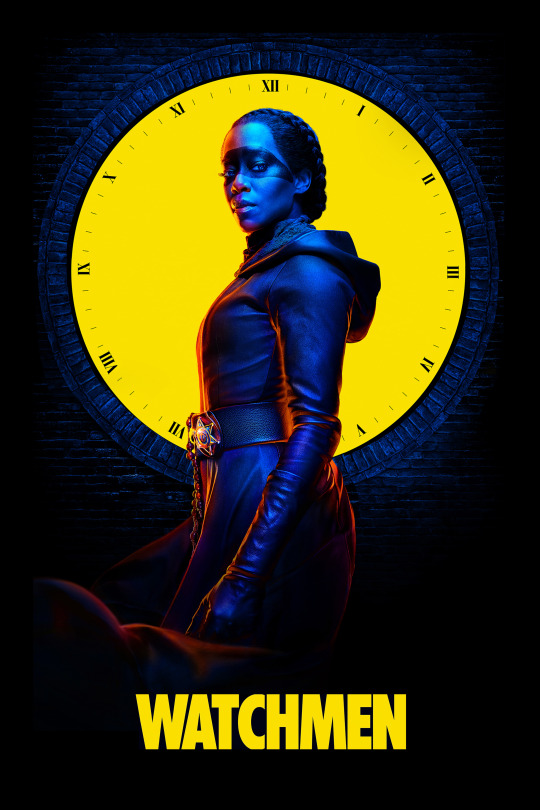
Introduction
In our examination of various theoretical schools of thought under the pretense of visual analysis, we have drawn upon the foundational works of Frantz Fanon, bell hooks, Judith Butler, and Stuart Hall. These theorists offer diverse perspectives on identity, power, and representation, which provide a rich framework for understanding the complexities of contemporary media narratives.
Frantz Fanon's psychoanalytic exploration in "The Negro and Psychopathology" delves into the psychological effects of colonialism and racism on the individual psyche. bell hooks, in "Oppositional Gaze," examines visual culture and resistance against the objectifying gaze of white supremacy. Judith Butler's theory of gender performativity, elaborated upon in "Gender is Burning," challenges fixed notions of gender identity. Stuart Hall's analysis of race and representation, particularly in "What is this 'Black' in Black Popular Culture?," illuminates the ways in which racial identity is constructed and negotiated through cultural representations.
Through analysis of the scene from episode 8 of “Watchmen” (2019), “A God Walks Into Abar,” in which Doctor Manhattan chooses his new form, Butler’s theory of gender performativity and bell hooks’ oppositional gaze become clear. The scene in episode 6, “This Extraordinary Being” where Will Reeves transforms into Hooded Justice also serves as a microcosm of the broader themes explored by the aforementioned theorists. Specifically, this scene provides a compelling exploration of race, identity, and power, demonstrating how the characters' actions and interactions reflect and challenge the dominant ideologies and structures of society.
After deconstructing the similarities and differences of each theorist, this synthesized analysis will provide a comprehensive understanding of each scene drawing upon the above theory. We will analyze the characters' internal struggles and emotions, the visual and narrative elements employed, and the broader socio-cultural context depicted in the television series. By applying these theoretical frameworks, we aim to unpack the layers of meaning embedded within the scene, shedding light on the complexities of identity formation, resistance, and representation in contemporary media.
Commonalities
Frantz Fanon, in "The Negro and Psychopathology," delves into the psychological effects of colonialism and racism on the individual psyche. Coming from a psychoanalytical school of thought, he examines how the colonized subject internalizes the dominant culture's perception of their racial identity (1), leading to a sense of inferiority and self-alienation (2). He argues that the colonized subject's desire to assimilate into the dominant culture reflects a form of psychological dependency (3), wherein the white gaze becomes internalized as the normative standard.
bell hooks, in "Oppositional Gaze," builds upon Fanon's ideas by examining how Black women resist the oppressive gaze of white supremacy through acts of visual subversion (4). She introduces the concept of the "oppositional gaze," which refers to the critical and resistant way in which marginalized groups look back at their oppressors (5) (in this context, particularly in media representations). hooks argues that by reclaiming their agency in the act of looking, Black women disrupt the power dynamics inherent in the colonial gaze (6). Her analysis comes from an intersectional feminist school of though, but intersects with psychoanalytic theory through its focus on the gaze as a site of power negotiation, and race theory, as she explores the racialized dynamics of visual representation.
Judith Butler, in "Gender is Burning," shifts the focus to gender identity and performativity. Drawing from poststructuralist ideals, Butler challenges the idea of gender as a fixed and essential category, arguing instead that it is a socially constructed performance enacted through repeated acts (7). Her concept of gender performativity destabilizes traditional notions of masculinity and femininity, opening up possibilities for gender subversion and resistance. Butler's work intersects with both psychoanalytic theory and feminist theory, through her engagement with Lacanian concepts of identity formation, and gender theory, as she deconstructs the binary understanding of gender.
Stuart Hall, in "What is this 'Black' in Black Popular Culture?," examines the complex relationship between race, representation, and cultural identity. Hall explores how Blackness is constructed and represented within popular culture (8), highlighting the ways in which dominant discourses shape perceptions of racial identity. Hall's work intersects with all aforementioned theorists in his exploration of power dynamics, through its focus on the production of subjectivity, and race theory, as he interrogates the politics of representation and identity formation.
Commonalities among all of these theorists include their critique of understandings of identity and identity formation, their emphasis on the role of power in shaping subjectivity, and their recognition of the importance of resistance and subversion in challenging dominant systems of oppression. Additionally, they all engage with the idea of identity as a complex and multifaceted construct that is constantly negotiated and contested within specific historical and cultural contexts, critiquing the power dynamics at play in the formation of identity.
The works of Frantz Fanon, bell hooks, Judith Butler, and Stuart Hall offer valuable insights into the interplay between psychoanalytic theory, queetheory, and critical race theory. By exploring the ways in which identity is constructed, performed, and contested, these theorists provide a framework for understanding the complex dynamics of power, representation, and resistance in contemporary society and popular media.
Differences
While Frantz Fanon, bell hooks, Judith Butler, and Stuart Hall all contribute to the critical examination of identity, power, and representation, they do so through different analytical lenses and with distinct emphases. These variations in approach reflect their unique disciplinary backgrounds, theoretical frameworks, and socio-historical contexts.
Frantz Fanon employs a psychoanalytic lens to analyze the psychological effects of colonialism and racism. His work in "The Negro and Psychopathology" focuses on the individual's internalization of racial inferiority and the impact of the colonial gaze on identity formation. Fanon's analysis is deeply rooted in Freudian psychoanalytic theory, particularly concepts such as the Oedipus complex and the unconscious. His writing style is often existential and introspective, as he reflects on his own experiences and those of his patients to illustrate broader patterns of racial alienation and resistance.
In contrast, bell hooks, informed by her background in cultural studies and feminism, approaches the intersection of race and gender through a critical lens that emphasizes the role of representation and visual culture. In "Oppositional Gaze," hooks examines how Black women resist the objectifying gaze of white supremacy through acts of visual subversion. Her analysis is grounded in the politics of representation, drawing attention to the ways in which images shape perceptions of race and gender. Unlike Fanon's psychoanalytic focus on internalized oppression, hooks foregrounds the agency of marginalized subjects in challenging dominant modes of visuality, focusing on the group rather than just the individual.
Judith Butler, influenced by poststructuralist philosophy and queer theory, offers a radical rethinking of gender identity and performativity in "Gender is Burning." Butler's analysis is characterized by its rejection of fixed and essentialist categories, as she argues that gender is a social construct enacted through repeated, gendered acts. Unlike Fanon and hooks, Butler's work transcends binary categories, opening up possibilities for gender subversion and resistance that extend beyond the confines of traditional identity categories. Rather than focusing on an individual or group, she challenges the notion of gender in our society.
Stuart Hall, with a background in cultural studies, approaches questions of race and representation from a socio-historical perspective. In "What is this 'Black' in Black Popular Culture?," Hall explores the construction of racial identity within the context of popular culture, emphasizing the ways in which discursive practices shape perceptions of race. His analysis is grounded in the politics of representation, but also attends to broader questions of power and ideology. Unlike Fanon, hooks, and Butler, Hall's work is less concerned with individual subjectivity and more focused on the ways in which collective identities are produced and contested within specific cultural contexts.
In summary, while Frantz Fanon, bell hooks, Judith Butler, and Stuart Hall all contribute to the critical examination of identity, power, and representation, they do so through different analytical lenses and with distinct emphases. Fanon focuses on the psychoanalytic effects of colonialism and racism on individual subjectivity, hooks foregrounds the agency of marginalized subjects in challenging dominant modes of visuality, Butler offers a radical rethinking of gender identity and performativity as a construct, and Hall explores the construction of racial identity within socio-historical contexts. These differences in approach enrich our understanding of the complex interplay between race, gender, and power in contemporary society.
Application: “This Extraordinary Being” and “A God Walks Into Abar”

In the eighth episode of “Watchmen” (2019), “A God Walks Into Abar,” there is a scene where Angela has Doctor Manhattan choose a less conspicuous form to present himself as (Kassell, 46:55). Angela presents Doctor Manhattan with various cadavers (which she presumably has access to as a result of her profession as a police officer), asking Doctor Manhattan to choose which form he would like to present himself as. She gives him three options, notably all white men, neglecting to open the last mortuary cooler. Doctor Manhattan, however, opts for Angela to choose for him, stating that what’s important is for her to be comfortable with his form. When Doctor Manhattan brings attention to the unopened locker, knowing that the man she neglected to present to him was the one she preferred, given that he is omnipotent. She opens the locker to reveal Calvin; a man who we know becomes her husband based on previous episodes. Doctor Manhattan then transforms himself into Calvin, and Angela caresses him. He is finally ‘real.’
Frantz Fanon's seminal work, "The Negro and Psychopathology," delves into the psychological effects of colonization and racism on the Black individual's psyche. Fanon argues that Black people often internalize white supremacist ideologies, leading to a fractured sense of self and a desire to assimilate into whiteness. In the scene, Angela's presentation of only white male bodies to Doctor Manhattan reflects a subconscious adherence to societal norms of cultural hegemony. Angela's implicit bias in offering only white options, yet deeper desire for Doctor Manhattan to disguise himself as Calvin, highlights the pervasive influence of white hegemony on perceptions of assimilation and desirability.
Stuart Hall's work on race and representation interrogates the ways in which race is constructed and contested within popular culture. In the scene, Angela's omission of Black bodies from the initial selection reflects broader patterns of erasure and invisibility experienced by Black individuals in media and society. However, Doctor Manhattan's insistence on acknowledging the unopened locker disrupts this erasure, highlighting the presence and significance of Blackness within the narrative. Similarly to Fanon’s psychoanalytical lens, by incorporating Hall’s theory into this scene, we can gain a deeper understanding of racial dynamics present in such a simple moment from this scene.
bell hooks' concept of the oppositional gaze explores how marginalized groups, particularly Black women, resist and subvert dominant narratives through their own gaze. Angela's gaze in this scene is crucial. Despite the options she presents, she subtly asserts her own agency by withholding the final choice, indicating her desire for a form that resonates with her own experiences and desires. By ultimately selecting Calvin, who is Black, Angela disrupts the normative gaze that privileges whiteness and affirms her own subjective desires and identity. This act of resistance aligns with hooks' assertion that marginalized individuals have the power to reclaim their agency and reshape dominant representations.
Moving in a slightly different direction than the theorists above, Judith Butler's theory of gender performativity can be applied to the actions Doctor Manhattan is ‘repeating’ in this scene. His transformation into Calvin underscores the fluidity and performative nature of identity. By choosing to embody Calvin, going so far as to change his vocal cords and height to embody a specific gender ideal, Doctor Manhattan challenges fixed notions of gender and racial identity, suggesting that these categories are mutable and contingent upon context and perception. Angela's love for Doctor Manhattan in a different form further reinforces the idea that identity is not inherent but enacted, suggesting that intimacy and connection transcend physical appearances.
In this scene, each theorist works together to weave together a narrative of internal struggle against a rigid society. What may come across as a simple love story on the surface can actually be analyzed as a complex exploration of race, gender, identity, and power dynamics. By synthesizing these theoretical frameworks, we gain a deeper understanding of the scene's significance and its broader implications for understanding identity and power in contemporary society.

The episode "This Extraordinary Being" from "Watchmen" (2019) tells an extremely visceral and heartbreaking story of trauma and rebirth which we can analyze under the lens of each of these theorists to gain a deeper understanding of the story being told. When walking along the road after a disheartening talk at the station, Will Reeves (who is Angela, experiencing Will’s memories) is approached by his colleagues asking if he would like to join them in the car for a ride home and a beer, (Williams, 45:06). Reeves politely declines their offer three times, and it’s clear that there is something amiss throughout this interaction. After they finally agree that they can grab a beer another time, the officers speed off while dragging two Black men’s bodies on ropes behind them. As Will navigates alleyways to try to escape the officers, the three officers corner him and beat him, dragging his body to a tree as he falls in and out of consciousness, all filmed from a point of view perspective. They hang Will from the tree with a hood over his head, but drop him to the ground just before he can no longer breathe. The officers cut the rope and tell him that next time they won’t cut him down. This pivotal moment marks the turning point for Will Reeves, as he walks the alleyways home with a noose around his neck. He intervenes in an assault taking place in the alley with the hood on his head, as he is now Hooded Justice.
Frantz Fanon's "The Negro and Psychopathology" delves into the psychological impact of racism and colonialism on the psyche of Black individuals, exploring the internalization of white supremacist ideologies. In this scene, the violence inflicted upon Will Reeves by his white colleagues reflects the pervasive racism ingrained within the fabric of society. Reeves's repeated polite refusals to join his colleagues in the car underscore the social boundaries imposed upon him as a Black man, navigating a world structured by white supremacy. The brutal assault and attempted lynching he endures highlight the dehumanization and violence inflicted upon Black bodies by those in power, echoing Fanon's analysis of the psychological wounds caused by racial oppression.
Stuart Hall's exploration of race and representation in popular culture illuminates the significance of Hooded Justice as a symbol of Black resistance and empowerment. Hooded Justice disrupts dominant narratives of heroism and justice, offering a counter-narrative that challenges the erasure of Black experiences from mainstream media. Through his actions, Hooded Justice interrogates the meaning of Blackness and its representation in popular culture, asserting the validity and complexity of Black identities. The scene underscores Hall's assertion that popular culture serves as a site of struggle and contestation, where marginalized groups assert their presence and challenge dominant discourses.
bell hooks' concept of the oppositional gaze offers a lens through which to analyze Will Reeves's response to his trauma and oppression. As he walks the alleyways with a noose around his neck, Reeves transforms his experience of victimization into a catalyst for resistance and empowerment. By donning the hood and intervening in the assault as Hooded Justice, Reeves subverts the narrative of victimhood imposed upon him by white supremacy and asserts his agency and strength. Through his actions, Reeves embodies hooks' notion of the oppositional gaze, reclaiming his agency and challenging the dominant power structures that seek to oppress him.
Judith Butler's theory of gender performativity provides insight into the construction of identity and the fluidity of gender roles and the way in which we change our self-presentation based on societal context and personal experience. Will Reeves's adoption of the persona of Hooded Justice represents a performative act through which he negotiates his identity in response to trauma and oppression. By embodying the figure of Hooded Justice, Reeves transcends conventional notions of masculinity and racial identity (later disguising himself as a White man), challenging fixed categories and asserting his autonomy. The hood becomes a symbol of empowerment and resistance, enabling Reeves to navigate the complexities of race, gender, and power in a hostile world. This scene offers a profound exploration of race, trauma, and resistance, and can be understood on an even deeper level when applying theoretical framework to our analysis. Through the character of Will Reeves and his transformation into Hooded Justice, the scene confronts the legacies of racism and violence while also affirming the resilience and agency of Black individuals.
Overall, both of these scenes explore similar facets of society and power, but with different nuances and focuses. Analysis through the lenses of Frantz Fanon, bell hooks, Judith Butler, and Stuart Hall reveals the intricate dynamics of race, gender, power, and resistance at play. Ultimately, the synthesized examination of these scenes can help to deepen our understanding of the subject matter of the show as well as complexities of identity formation, representation, and liberation within contemporary society.
Conclusion
Reviewing the literature and applying the theories of Frantz Fanon, bell hooks, Judith Butler, and Stuart Hall to the selected scenes from "Watchmen" (2019) unveils a nuanced exploration of race, gender, power, and resistance within the series. Through Fanon's lens, the scenes illustrate the enduring impact of racial oppression on individual psyches, exposing the internalized white supremacist ideologies and the trauma inflicted upon Black bodies. hooks' concept of the oppositional gaze is evident in the characters' acts of resistance and defiance against dominant narratives, reclaiming agency and challenging hegemonic structures. Butler's theory of gender performativity elucidates the fluidity and multiplicity of identity constructions, as characters negotiate and subvert conventional gender and racial norms. Stuart Hall's insights into race and representation shed light on the complexities of Black experiences within popular culture, highlighting the significance of narratives that disrupt stereotypes and affirm the validity of marginalized identities. Together, these analyses deepen our understanding of the series's themes, offering a compelling exploration of identity, power, and liberation within a complex and multifaceted narrative landscape.
(1) Frantz Fanon, “The Negro and Psychopathology” in Black Skin White Masks, 115. Translated by Charles Lam Markmann. London: Pluto Press, 1986. (2) Fanon, “The Negro and Psychopathology”, 140-142. (3) Fanon, “The Negro and Psychopathology”, 145-146. (4) bell hooks, “The Oppositional Gaze: Black Female Spectators” in Feminist Film Theory (New York: New York University Press, 1999), 318. (5) hooks, “The Oppositional Gaze,” 308, 313. (6) hooks, “The Oppositional Gaze,” 319. (7) Judith Butler, “Gender is Burning: Questions of Appropriation and Subversion” in Feminist Film Theory a Reader (New York: Washington Square, 1999,) 341-343. (8) Hall, Stuart. "What is this ‘Black’ in Black Popular Culture?" in Critical Dialogues in Cultural Studies, edited by David Morley and Kuan-Hsing Chen, London: Routledge, 1996, 473-474.
0 notes
Text
Analytical Application #6: Race and Representation
Cultural Hegemony
This term, as described by Stuart Hall, refers to the dominance of one cultural group over others, where the dominant culture's values, beliefs, and norms are accepted as the societal norm, shaping perspectives, behaviors, and institutions. Hall describes that cultural hegemony is about “shifting the balance of power in the relations of culture; it is always about changing the dispositions and the configurations of cultural power…” (1).
youtube
In the song “I Wan'na Be Like You" from The Jungle Book (1967), the character King Louie expresses his desire to emulate human behavior and gain access to their power and privileges. The lyrics reflect a longing to adopt the dominant culture's traits and characteristics, symbolized by the "man's red fire," which represents human technology and sophistication.
King Louie's aspiration to "be like you" (i.e., humans) can be equated to the allure and influence of the dominant culture over marginalized groups in our modern society. The song underscores the idea that the dominant culture's values and norms are not only accepted but desired by those on the margins. It reflects the power dynamics at play, where the dominant culture's traits are idealized and seen as a pathway to empowerment and inclusion.
Moreover, King Louie's character, voiced by a white actor (Louis Prima), singing a jazz-inspired song further highlights the appropriation of African American culture by mainstream entertainment. This appropriation perpetuates cultural hegemony by reinforcing stereotypes and erasing the contributions of marginalized groups while simultaneously elevating the dominant culture's influence.
The song's portrayal of King Louie's pursuit of human-like qualities mirrors the broader societal phenomenon described by Stuart Hall as the "shifting balance of power" in cultural relations. It illustrates how cultural hegemony operates not only through overt forms of control but also through the internalization and emulation of the dominant culture's values and behaviors by subordinate groups.
In essence, "I Wan'na Be Like You" serves as a poignant commentary on cultural hegemony, demonstrating how the dominant culture's influence permeates even the realms of fantasy and animation, shaping perspectives, behaviors, and aspirations.
Eurocentrism
Eurocentrism, as discussed by Shohat and Stam, is a worldview centering European experiences as superior (2), while marginalizing non-Western cultures. It prioritizes European perspectives, often distorting or erasing the histories, identities, and contributions of other cultures (3). This perpetuates a hierarchy favoring Euro-American traditions, while exoticizing or relegating non-European cultures to the periphery.
"Everybody Wants to be a Cat" from Disney's original Aristocats (1970) embodies Eurocentrism and cultural appropriation through its portrayal of cats as the epitome of high class and sophistication. The song celebrates the lifestyle and demeanor of the feline characters, who are dubbed as "aristocats," implying a connection between their elegance and European aristocracy.
The song's lyrics and animated scenes depict the cats engaging in leisurely activities such as playing music, dancing, and indulging in lavish feasts. These behaviors align with Eurocentric ideals of refinement and luxury, reinforcing the notion that European experiences are superior and aspirational. However, this song manages to highlight this eurocentric perspective while still appropriating Black culture, using rhythms and chord progressions pioneered by Black communities during blues/jazz movements like the Harlem Renaissance. This notion reinforces the everpresent cycle of the high class adoption of lower class activities making it “cool.”
Furthermore, the characterization of the cats as aristocrats reflects Eurocentric hierarchies, where social status and privilege are closely associated with European cultural norms. By idealizing the cats' lifestyle, the film marginalizes non-European cultures and reinforces the Eurocentric worldview that prioritizes European perspectives while erasing or exoticizing the contributions of other cultures.
The desire expressed in the song's title, "Everybody Wants to be a Cat," underscores the pervasive influence of Eurocentrism, as even non-feline characters aspire to embody the perceived sophistication and status associated with European ideals. This desire to emulate European culture further perpetuates the hierarchy that favors Euro-American traditions, while relegating non-European cultures to the periphery.
In essence, "Everybody Wants to be a Cat" shows how the celebration of European aesthetics and values can reinforce cultural hegemony and marginalize non-Western cultures.
The Orient
As explored by Edward Said, "the Orient" refers to a constructed and exoticized idea of the East, particularly in Western imagination (4). It encompasses a range of diverse cultures and societies from Asia, the Middle East, and North Africa, but is often portrayed through Western lenses of stereotypes, prejudices, and fantasies (5).
youtube
The Siamese cat scene from Lady and the Tramp (1955) provides a poignant illustration of the Orientalist lens through which non-Western cultures, in this case, Asian cultures, are often portrayed in Western media. The Siamese cats, Si and Am, are depicted as mischievous, conniving, and inherently villainous characters, embodying a host of stereotypes associated with the Orient.
The scene reinforces Edward Said's concept of the Orient as a constructed and exoticized idea in Western imagination. Si and Am are portrayed with exaggerated features and mannerisms that align with Western stereotypes of Asian people, such as slanted eyes, exaggerated accents, and manipulative or conniving behavior. Their song, "We are Siamese," further perpetuates these stereotypes by employing Orientalist imagery and language, depicting the cats as inscrutable and deceitful, even using a racist voice to depict the characters as well.
Additionally, this scene/song reflects the Western tendency to homogenize and simplify diverse non-Western cultures under a single, monolithic category, as described in Said’s work. Despite the vast cultural diversity within Asia, Si and Am are portrayed as representative of all Asian cultures, reinforcing the Orientalist notion of the East as a homogeneous and exotic "other" to be feared or laughed at.
Furthermore, the scene exemplifies the power dynamics inherent in Orientalist representations, where Western perspectives and fantasies about the Orient are privileged over authentic depictions of non-Western cultures. By reducing Si and Am to caricatures and perpetuating harmful stereotypes, the scene serves to exoticize and marginalize Asian cultures while reinforcing Western cultural hegemony.
This scene exemplifies the Orientalist tendencies present in many representations of Asian cultures in Western media, where non-Western cultures are exoticized, stereotyped, and marginalized through a lens of Western superiority and fantasy.
Popular Culture
Drawing from various perspectives including Stuart Hall's work, popular culture encompasses cultural artifacts, practices, and expressions that emerge from and resonate with the general populace, often shaped by mass media, consumerism, and technology. Hall’s work specifically finds ties between Black culture and popular culture within the US related to tradition, music, and American interests and influence (6).
youtube
The song "When I See an Elephant Fly" from Dumbo (1941) encapsulates the essence of popular culture as a reflection of societal values, traditions, and entertainment preferences. The song, performed by a group of crows, embodies the intersection of popular culture with elements of African American traditions and music, echoing Stuart Hall's exploration of the ties between Black culture and mainstream popular culture.
The style of music used in the scene represents a significant aspect of popular culture at this time, infusing the film with elements of jazz and soulful singing which were integral to African American musical traditions. Moreover, the scene highlights the democratizing nature of popular culture, as it is accessible and relatable to a wide audience. The crows' banter, coupled with the catchy melody, appeal to both children and adults, demonstrating how popular culture and representation of this nature can have a lasting effect on viewers, conforming their understanding of different groups.
Additionally, the scene reflects the role of popular culture in falling under social norms and aligning with various stereotypes. These characters being depicted as crows was certainly no accident. In historical context, Dumbo’s release occurred during times of segregation in the US, specifically regarding Jim Crow laws. The stereotypical depiction of Black culture coupled with the caricature-like representation likely had detrimental effects on the overall depiction and understanding of Black people in the US and beyond.
Overall, "When I See an Elephant Fly" exemplifies how popular culture serves as a dynamic reflection of society, incorporating diverse cultural influences in an entertaining way while also often conforming to the symbolic order perpetuated by the ruling class.
Stereotype
As discussed by Ella Shohat and Robert Stam in their chapter about the very topic, a stereotype is essentially a simplified and often exaggerated representation or image of a particular group, based on fixed and oversimplified ideas or assumptions (7). Stereotypes can be pervasive in media, literature, and everyday discourse, shaping perceptions and attitudes towards individuals or communities. They often serve to reinforce existing power dynamics, perpetuate prejudice, and limit nuanced understandings of diverse identities and experiences (8).
youtube
"What Makes the Red Man Red" from Peter Pan (1953) exemplifies the harmful effects of stereotypes on Indigenous peoples through its simplistic and caricatured portrayal of Native American culture. The song perpetuates stereotypes by reducing Native Americans to one-dimensional characters defined by exaggerated physical features, primitive language, and simplistic behaviors.
The lyrics of the song, with lines like "What made the red man red?" and "Why does he ask you 'How'?", reinforce the stereotype of Native Americans as inherently primitive and mysterious, reinforcing the idea of them as the "other" in contrast to the presumed superiority of Western culture. These portrayals not only simplify and exoticize Indigenous cultures but also perpetuate harmful myths and misconceptions about their traditions and way of life.
Moreover, the song's characterization of Native Americans as comical and childlike further reinforces existing power dynamics, where Indigenous peoples are depicted as subordinate and inferior to Western society. By reducing them to caricatures for comedic effect, the song diminishes the complexity and diversity of Indigenous cultures, reinforcing stereotypes that have been used to justify discrimination and oppression throughout history.
Additionally, the song's portrayal of Native Americans as perpetually stuck in the past, with references to "big chief" and "how," ignores the contemporary realities and contributions of Indigenous peoples, further marginalizing their voices and experiences in mainstream media.
In conclusion, this scene serves as an example of how stereotypes perpetuate harmful misconceptions and prejudices about marginalized communities, reinforcing power imbalances and limiting opportunities for authentic representation and understanding.
(1) Hall, Stuart. "What is this ‘Black’ in Black Popular Culture?" in Critical Dialogues in Cultural Studies, edited by David Morley and Kuan-Hsing Chen, London: Routledge, 1996, 471. (2) Shohat, Ella and Stam, Robert. "Stereotype, Realism, and the Struggle Over Representation" in Unthinking Eurocentrism, London: Routledge, 1994, 194. (3) Shohat and Stam, "Stereotype, Realism, and the Struggle Over Representation," 200. (4) Said, Edward W.. "The Scope of Orientalism" in Orientalism, London: Routledge & Kegan Paul Ltd., 1978, 9. (5) Said, Orientalism, 34. (6) Hall, "Black Popular Culture", 469-472. (7) Shohat and Stam, "Stereotype, Realism, and the Struggle Over Representation," 197, 210. (8) Shohat and Stam, "Stereotype, Realism, and the Struggle Over Representation," 183.
0 notes
Text
Edward W. Said's "Orientalism" examines the deep-rooted connections between Orientalist narratives and their perpetuation through popular media, while, Ella Shohat and Robert Stam's exploration of stereotypes delves into their role in shaping representations of people in media.
Orientalism, as discussed by Edward W. Said, is intricately interwoven with film, television, and popular media, perpetuating standardized depictions and cultural stereotypes of the "mysterious Orient." Said argues that these mediums often amplify the exoticization and mystification of the East (1), fostering an academic and imaginative demonology that distorts reality (2).
According to Ella Shohat and Robert Stam, stereotypes profoundly shape how people are represented in media, influencing public perception, citing many examples such as racist caricatures as affecting the various perception of various groups (3). They state that subversions of representation in film can “create counterpressure,” (4), essentially stating that by subverting dominant narratives, media representation can have the power to change public perception. As well as this, Shohat and Stam encourage critical engagement with various media (5), citing successful critical analyses as examples, as a means of protest and media literacy to positively affect future productions.
In conclusion, the works of Edward W. Said, Ella Shohat, and Robert Stam's underscore the pervasive influence of media in perpetuating stereotypes and misrepresentations, while also highlighting the potential for critical engagement and counter-narratives to challenge and reshape public perceptions.
(1) Said, Edward W.. "The Scope of Orientalism" in Orientalism, London: Routledge & Kegan Paul Ltd., 1978, 34. (2) Said, Orientalism, 16. (3) Shohat, Ella and Stam, Robert. "Stereotype, Realism, and the Struggle Over Representation" in Unthinking Eurocentrism, London: Routledge, 1994, 197. (4) Shohat and Stam, "Stereotype, Realism, and the Struggle Over Representation", 182 (5) Shohat and Stam, "Stereotype, Realism, and the Struggle Over Representation", 182
Reading Notes 10: Said to Shohat and Stam

To wrap up our studies of visual analysis, Edward W. Said’s “Orientalism” and Ella Shohat and Robert Stam’s “Stereotype, Realism, and the Struggle Over Representation” provide critical paths to understanding the roles of race and representation play in our production and consumption of film, television, and popular culture.
How is orientalism linked to film, television, and popular media, and in what ways has standardization and cultural stereotyping intensified academic and imaginative demonology of “the mysterious Orient” in these mediums?
What role do stereotypes play in the representation of people, and in what ways can film and television change the perception of cultural misrepresentation?
@theuncannyprofessoro
16 notes
·
View notes
Text
Analytical Application 5: Gender and Sexuality and "The Sandman"
Gender Performativity
Definition: Central to Butler's gender theory, gender performativity posits that gender is not an inherent trait but rather a repeated performance that creates the illusion of a stable identity. Through acts of expression and embodiment, individuals continually produce and negotiate their gender within social contexts, challenging fixed notions of masculinity and femininity. Butler particularly cites drag as an example of gender performance through participation in gendered acts (1).
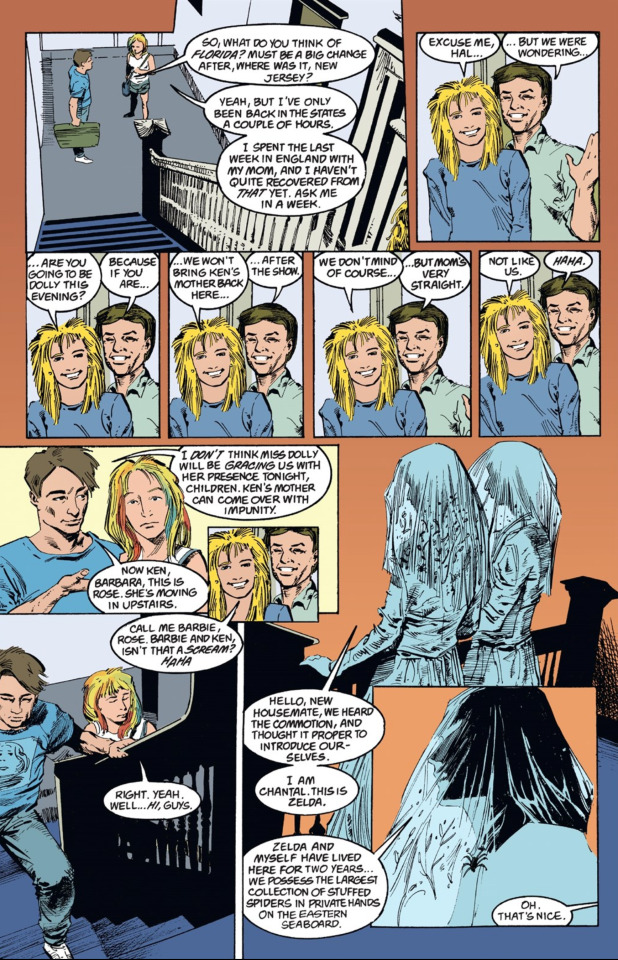
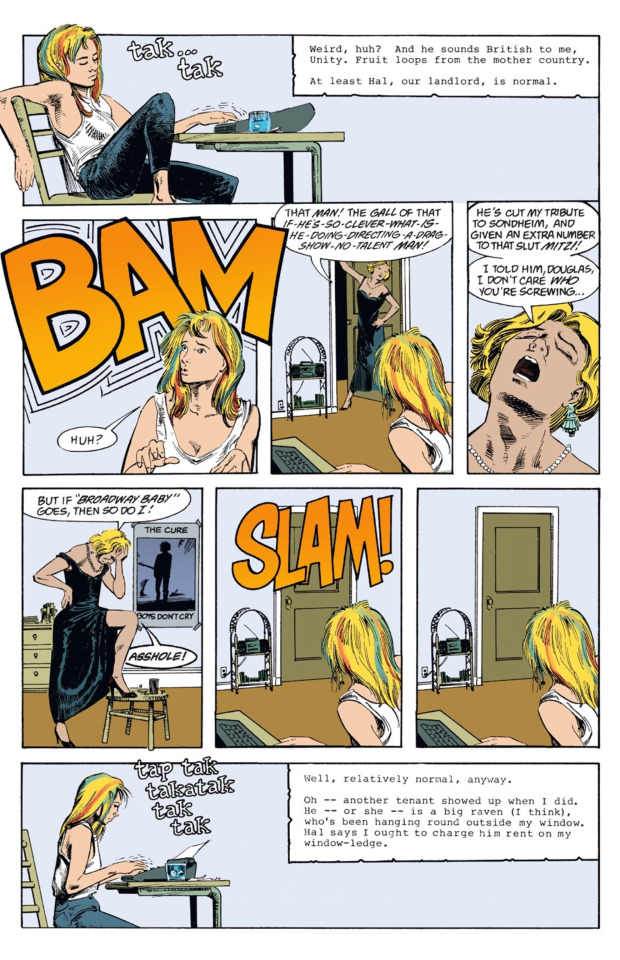
Gaiman, 279 & 284
Hal's transformation into Dolly in the chapter “Moving In” exemplifies Judith Butler's theory of gender performativity. As Hal assumes the persona of Dolly, he consciously engages in gendered acts that subvert traditional notions of masculinity and femininity. By donning a short blonde wig, a shining black dress, along with various accessories, Hal/Dolly actively constructs a new, gendered persona for himself outside of his own day to day identity. Through his drag performance, Hal disrupts the idea of a stable and fixed gender identity, highlighting the fluidity and performativity of gender. Dolly's flamboyant and dramatic demeanor contrasts with Hal's persona when initially showing Rose around the house, showcasing the multiplicity of gender expressions within a single individual. This duality underscores Butler's assertion that gender is not an inherent trait but rather a product of repeated performances within social contexts.
Hal's embrace of his drag persona challenges societal expectations and norms surrounding gender, illustrating the potential for subversion and resistance within gender performativity. By participating in drag, Hal/Dolly navigates and negotiates the complexities of gender, offering a glimpse into the constructed nature of identity. Through his performance, Hal/Dolly not only entertains but also disrupts dominant narratives, opening up possibilities for alternative expressions of gender beyond the confines of the sex/gender binary. Overall, Hal's portrayal as both a "normal" landlord and a drag persona highlights the intricate interplay between performance, identity, and social context in shaping notions of gender. His embodiment of Dolly exemplifies Butler's concept of gender performativity, challenging viewers to reconsider and expand their understanding of gender beyond traditional binaries.
Scopophilia
Definition: Derived from Mulvey's psychoanalytic film theory, scopophilia refers to the pleasure derived from looking and being looked at (2). In her work, Mulvey discusses how cinema often caters to the male gaze, objectifying women as passive objects of desire, thus perpetuating patriarchal norms through visual consumption (3).
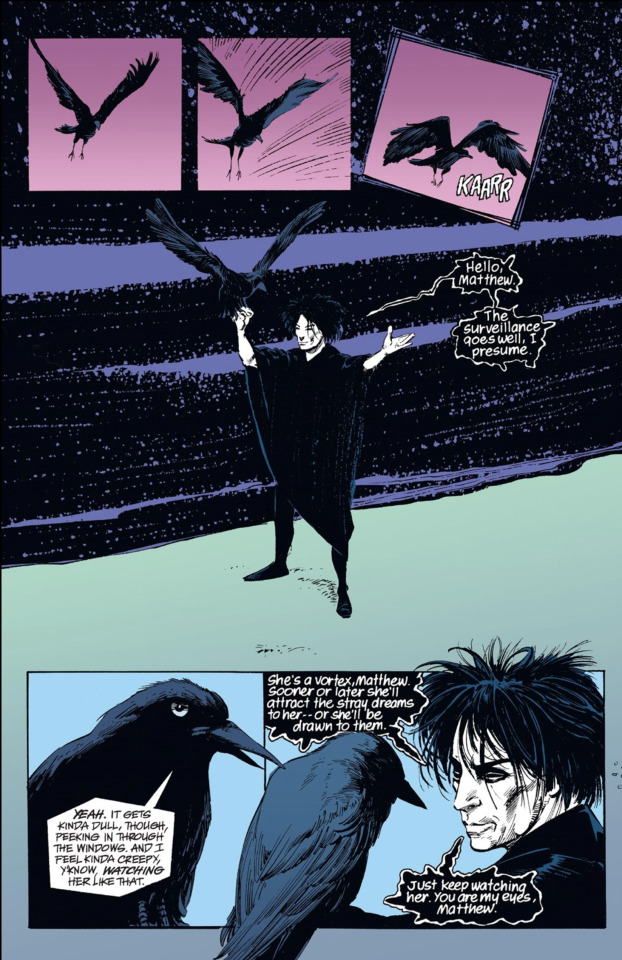
Gaiman, 286
In the same chapter, we witness Dream, a masculine-presenting Endless, spying on and gathering information about the Vortex, Rose through his trusty crow Matthew. This scene encapsulates the aforementioned definition of scopophilia quite well. As Dream observes Rose from afar, he not only indulges in the act of looking but also derives a sense of pleasure and control from his voyeuristic gaze. Through Matthew's perspective, Dream objectifies Rose, reducing her to a passive object of desire. Mulvey's theory of scopophilia emphasizes the power dynamics inherent in the act of looking, particularly within the context of patriarchal structures. Dream's observation of Rose reflects a form of visual consumption that aligns with the male gaze, reinforcing traditional gender roles and perpetuating societal norms of objectification. By positioning Rose as the object of his gaze, Dream asserts his dominance and reinforces his own agency while diminishing Rose's autonomy.
Furthermore, the use of Matthew as a conduit for Dream's voyeuristic gaze adds another layer to the scene. As a supernatural entity, Matthew embodies a certain detachment and otherness, allowing Dream to distance himself from the consequences of his actions. This amplifies the sense of control and power that Dream derives from his observation of Rose, reinforcing the dynamics of scopophilia within the narrative. This scene serves as a poignant example of how the male gaze operates within visual media. Through his voyeuristic gaze, Dream perpetuates patriarchal norms of objectification, reinforcing his dominance and control over Rose. Mulvey's concept of scopophilia provides a framework for understanding the power dynamics at play in this scene, highlighting the complexities of gendered representation and visual consumption within "The Sandman" narrative.
Gender Norms
Definition: Gender norms are societal expectations and standards dictating the behaviors, roles, and attributes deemed appropriate for individuals based on their perceived gender. These norms shape how people express themselves, interact with others, and navigate various social contexts. Judith Butler's theory of gender performativity emphasizes how gender norms are not inherent but are instead constructed and maintained through repeated performances of gendered behaviors (4).
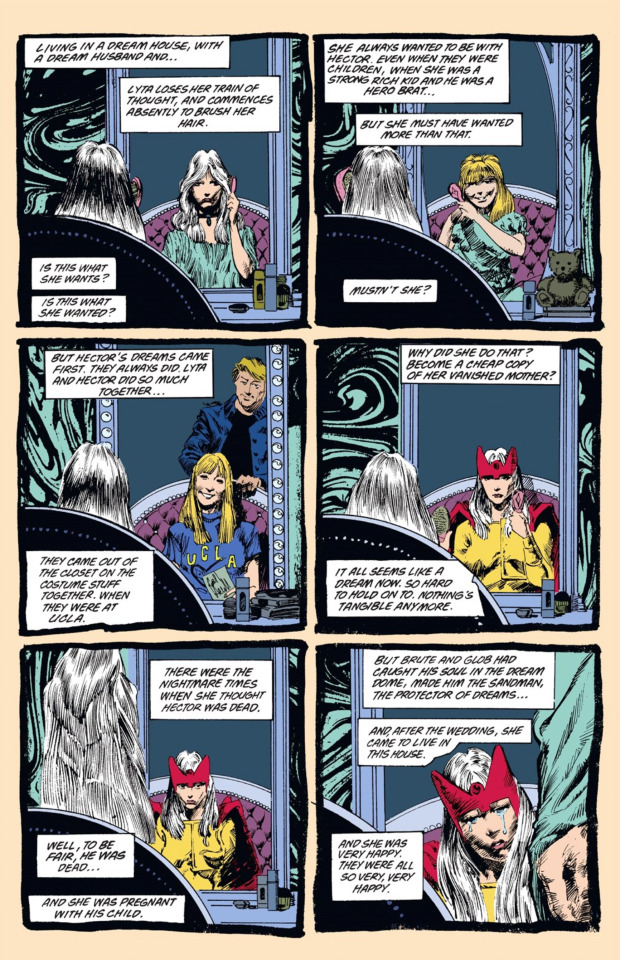
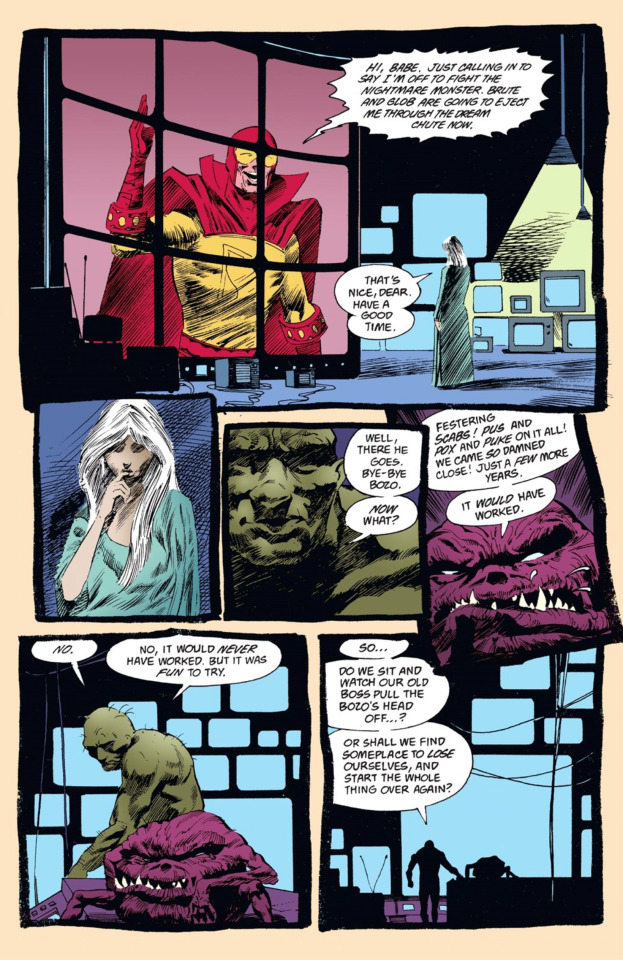
Gaiman, 309-310
In "The Sandman: Book One," the character of Lyta Hall exemplifies the challenges posed by societal gender norms, particularly in the chapter "Playing House." As she grapples with her role in the Dream World alongside her husband, Hector, also known as the Sandman, Lyta finds herself confined by traditional expectations of femininity and motherhood. Lyta's portrayal as the doting wife and expectant mother reflects the gender norms that dictate women's roles within patriarchal societies. Despite her desires and aspirations outside of the domestic sphere (which she can barely think about without her mind going blank), Lyta feels compelled to prioritize her relationship with Hector and fulfill the duties expected of her as a partner. This internal conflict underscores the pressure individuals face to conform to predefined gender roles, even within fantastical realms like the Dream World.
Judith Butler's theory of gender performativity offers insight into Lyta's struggles, highlighting how societal expectations shape and constrain individuals' performances of gender. Lyta's adherence to traditional gender norms is not a reflection of her inherent identity but rather a result of the social conditioning that dictates her behavior within the Dream World. Her reluctance to challenge these norms stems from the fear of deviating from societal expectations and facing potential consequences. Furthermore, Lyta's experience can serve as a critique of the limitations imposed by gender norms, particularly on women's autonomy and agency. Despite her apparent dissatisfaction with her role, Lyta feels obligated to maintain the facade of the dutiful wife and mother, calling Hector “Dear” and telling him to “have a good time” (Gaiman, 310) during his upcoming fihgt, highlighting the coercive nature of gender expectations. Her story reflects the broader struggle for gender equality and the need to challenge and redefine traditional notions of femininity and masculinity in order to create more inclusive and equitable societies.
Subversion
Definition: Rooted in hooks' intersectional feminist theory, subversion involves challenging and destabilizing oppressive power structures. hooks emphasizes the importance of resistance and transformative practices that disrupt dominant narratives of race, gender, and class, fostering empowerment and liberation for marginalized groups (5).
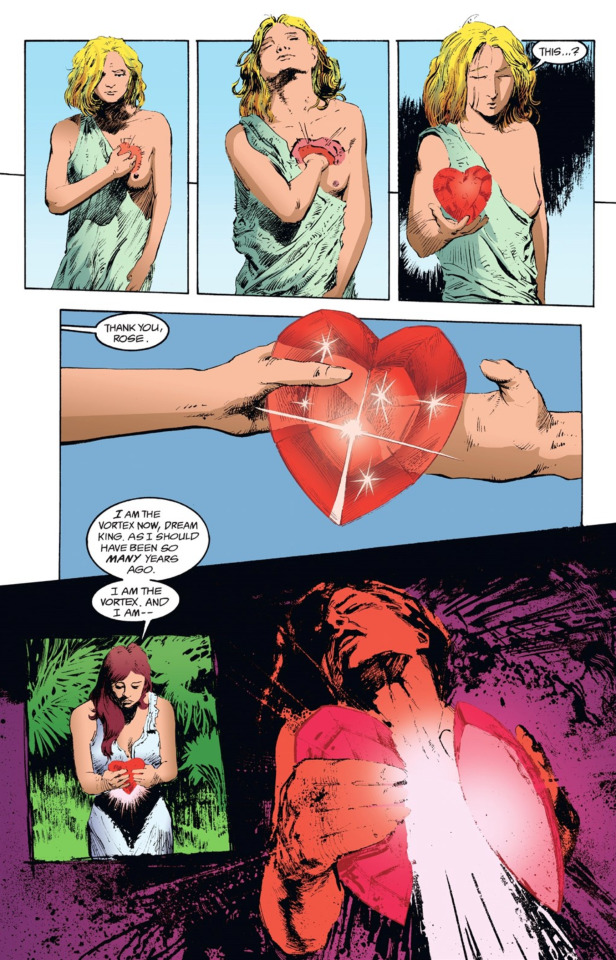
Gaiman, 429
In the scene where Unity confronts Dream in the chapter "Lost Hearts," the concept of subversion, as articulated by bell hooks, is vividly portrayed. Unity's act of challenging Dream's authority and disrupting the narrative he has constructed serves as a powerful example of resisting oppressive power structures. Dream, as a powerful and authoritative figure with control of the Dream World, represents a dominant narrative that imposes control and dictates the lives of others. Unity's decision to confront him directly and refuse to adhere to his decision to kill Rose represents a direct challenge to his power and control. Unity disrupts the established order and asserts her agency. Unity's actions speak to hooks’ words on transformative practices, as she seeks to dismantle the oppressive power dynamics that govern the Dream World. Her willingness to sacrifice herself in order to protect Rose demonstrates a commitment to challenging injustice and fostering empowerment.
hooks' emphasis on resistance and transformative practices is reflected in Unity's actions, as she actively works to destabilize the power dynamics at play. Rather than succumbing to the role assigned to her granddaughter by Dream, Unity chooses to rewrite her own narrative. In doing so, she embodies the spirit of subversion by choosing her own path and carrying on her legacy through her granddaughter. Overall, the scene where Unity confronts Dream in "Lost Hearts" can be viewed as a metaphorical example of the concept of subversion as defined by bell hooks. Through her defiance and refusal to conform to dictated norms, Unity challenges dominant narratives and paves the way for Rose’s freedom.
Sex/Gender Binary
Definition: The sex/gender binary is a societal framework that categorizes individuals into two distinct and mutually exclusive categories: male and female. It presumes a fixed alignment between biological sex and gender identity, neglecting the diversity of sex characteristics and gender identities that exist beyond this binary classification. While she doesn’t address the binary directly, Judith Butler's critique of the sex/gender binary challenges the idea that sex and gender are naturally or inevitably linked. Her work encourages a reexamination of the assumptions underlying the sex/gender binary, advocating for a more inclusive understanding of sex and gender that acknowledges their fluidity and complexity.
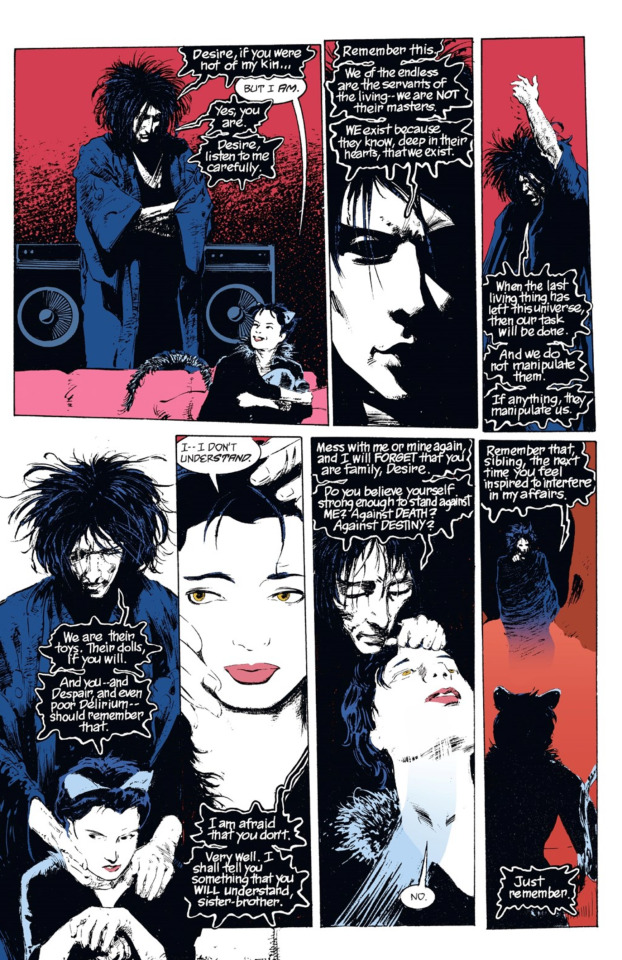
Gaiman, 438
The character Desire directly challenges this definition of the binary described above through their ambiguous and fluid presentation. Toward the end of the same chapter as Unity’s sacrifice, we see an interaction between Dream and Desire where we get a better understanding of Desire’s identity. As one of the Endless, Desire defies categorization within traditional gender binaries, embodying characteristics that transcend fixed notions of male and female.
Desire's depiction as an androgynous being reflects the limitations of the sex/gender binary in capturing the complexity of human identity. Throughout the narrative, Desire is referred to using a variety of pronouns, including "it," "he," and "she," (Gaiman, 439) further blurring the lines between conventional gender categories. This ambiguity challenges the assumption that sex and gender are inherently linked, highlighting the fluidity and multiplicity of gender identities that exist beyond the binary classification. Judith Butler's critique of the sex/gender binary provides a framework for understanding Desire's character, emphasizing the constructed nature of gender identity and the limitations of binary thinking. By embodying traits that defy traditional gender norms, Desire disrupts the idea of a fixed alignment between biological sex and gender expression, encouraging readers to question and challenge existing notions of gender.
Furthermore, Desire's ability to impregnate Unity (as Dream finds out on page 437) further destabilizes traditional conceptions of gender and reproduction. This act challenges the notion that biological sex determines one's capacity for reproduction, highlighting the complexity of human sexuality and the ways in which it transcends binary categorizations.
(1) Judith Butler, “Gender is Burning: Questions of Appropriation and Subversion” in Feminist Film Theory a Reader (New York: Washington Square, 1999) 338-339.
(2) Laura Mulvey, “Visual Pleasure and Narrative Cinema” in Film Theory and Criticism (New York: oxford University Press, 2009), 713.
(3) Mulvey, "Visual Pleasure and Narrative Cinema," 719.
(4) Butler, "Gender is Burning," 338.
(5) bell hooks, “The Oppositional Gaze: Black Female Spectators” in Feminist Film Theory (New York: New York University Press, 1999), 318.
0 notes
Text
In Jack Halberstam’s exploration of butch representation in film and Stuart Hall’s examination of Black popular culture, we witness the intricate relationship between marginalized identities, representation, and power dynamics.
In “Looking Butch”, Halberstam explains the history of “positive images” in queer representation in cinema, and talks about the skewed representation of various marginalized groups as a result (1). An example which he cites is Vasquez’s role in *Aliens* (1986), where her character contributes to stereotypes across her racial and gender identity and presentation (2). While these stereotypes are played into in the film, Vasquez’s character is still played as a ‘badass independent Latina woman’ (despite her being played by a White woman). This “positive” depiction lacks intersectional awareness and contributes to the idea of positive images as discussed by Halberstam.
Cultural representations serve as contested terrain where power dynamics play out (3). Through our studies, we have learned that popular culture not only reflects societal norms but also shapes and reinforces them. Hall notes that some cultural strategies have the ability to “shift the dispositions of power,” (4). He notes that the hegemonic shift of high culture (5) occurred as a result of the ruling class using these cultural strategies which he describes (6).
In synthesizing Jack Halberstam's analysis of butch representation in film with Stuart Hall's examination of Black popular culture, we discern the intricate interplay between marginalized identities, representation, and power dynamics. These theorists illuminate how cultural representations both reflect and perpetuate societal norms, underscoring the need for intersectional awareness in challenging hegemonic structures.
(1) Halberstam, Jack. "Looking Butch: A Rough Guide to Butches on Film." in Female Masculinity, London: Duke University Press, 1998, 179.
(2) Halberstam, “Looking Butch”, 181.
(3) Hall, Stuart. "What is this ‘Black’ in Black Popular Culture?" in Critical Dialogues in Cultural Studies, edited by David Morley and Kuan-Hsing Chen, London: Routledge, 1996, 471.
(4) Ibid.
(5) Hall, "Black Popular Culture", 468.
(6) Hall, "Black Popular Culture", 471.
Reading Notes 9: Halberstam to Hall

Jack Halberstam’s “Looking Butch: A Rough Guide to Butches on Film” and Stuart Hall’s “What is this ‘Black’ in Black Popular Culture?” link our inquiries into gender and sexuality with race and representation.
What examples of “positive images” of marginalized peoples are in film and television, and how can these “positive images” be damaging to and for marginalized communities?
In what ways is (popular/visual) culture (performance) a complicated and political site where various identities are negotiated, and how can cultural strategies make a difference and shift dispositions of power?
@theuncannyprofessoro
16 notes
·
View notes
Text
Power and privilege play a crucial role in shaping relations among individuals and institutions, as elucidated by both Audre Lorde and Judith Butler. These dynamics often lead to the oppression and marginalization of certain groups based on factors such as race, gender, sexuality, and class. Lorde's notion of using the master's tools to dismantle the master's house suggests a critical reflection on how oppressive systems can be both perpetuated and challenged within marginalized communities. Lorde particularly highlights the importance of difference when looking at what is valued throughout history (1). Similarly, Butler's examination of gender performance highlights how cultural, societal, and media representations reinforce and complicate gender norms. Butler discusses the construction of gender and the societal associations we make with gendered actions (2). Acknowledging and examining oppression and marginalization require a nuanced understanding of power dynamics. Lorde emphasizes the importance of recognizing and utilizing the agency within marginalized communities to challenge oppressive structures. This involves creating spaces for community and dialogue, advocating for intersectional approaches that address the complexities of identity and power (3).
Gender performativity is all around us, all of the time. Butler's concept of gender as a performative act underscores the idea that heterosexuality, like other gender identities, is not inherent but constructed through repeated actions and cultural representations. Heterosexuality, therefore, becomes a performance within the context of societal expectations and norms (4). Overall, both Lorde and Butler explore the relationship between gender and power, but with varying perspectives. Lorde offers a feminist’s perspective on oppressive systems and provides tools to combat this issue, while Butler particularly explores gender as a construct and its effects on society.
(1) Audre Lorde, “The Master’s Tool Will Never Dismantle the Master’s House” in Sister Outsider (Freedom, CA: The Crossing Press, 1984), 114. (2) Judith Butler, “Gender is Burning: Questions of Appropriation and Subversion” in Feminist Film Theory a Reader (New York: Washington Square, 1999,) 337-338. (3) Audre Lorde, “The Master’s Tool Will Never Dismantle the Master’s House,” 122-123. (4) Judith Butler, “Gender is Burning,” 338-340.
Reading Notes 8: Lorde to Butler
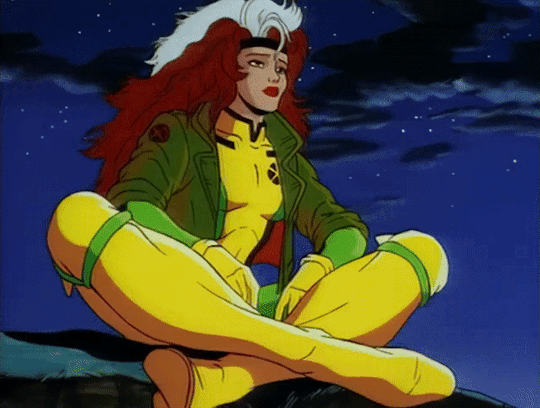
In our continued discussions, Audre Lorde’s “The Master’s Tools Will Never Dismantle the Master’s House” and “Age, Race, Class, and Sex: Women Redefining Difference,” and Judith Butler’s Gender is Burning: Questions of Appropriation and Subversion” provide further introspection into systems and definitions of gender and sexuality.
How do power and privilege impact the relations people have with each other and with institutions, and how can we acknowledge, examine, and remedy oppression and marginalization using oppressive and marginalized systems?
How do cultural, societal, and media representations support gender performativity and in so doing complicate gender norms, and in what ways is heterosexuality a performance?
@theuncannyprofessoro
17 notes
·
View notes
Text
I find a lot of Megan’s work recently to be such a cultural reset in terms of reclamation. Especially the aesthetics she used in this video (particularly in the intro) really stood out to me. I found the senator character being representative of participants of the male gaze (and critics of Megan’s sexuality) to be very effective, along with the dichotomy of 50-60’s fashion and sexual liberation. I think I find this video to be more nuanced and effective than Telephone in terms of its commentary on female sexuality and agency, though Telephone was definitely the blueprint.
I also wanted to note how the female characters were also participating in traditionally female acts such as being waitresses, secretaries, shopping, nursing, etc. but with the added element of sexuality. Thanks for such a great discussion you two!
Panel Presentation: "Telephone" and "Thot Shit"
youtube
“TELEPHONE” LADY GAGA & BEYONCE
In Lady Gaga’s “Telephone” (ft. Beyonce) music video, she centers two women criminals, half of the video taking place at a women's prison and the other half following the homicide the women (played by Gaga and Beyonce) set out to commit. The first striking thing about the video is the immediate use of women’s bodies. All the women in the prison are wearing revealing outfits, even the women security guards. As Gaga walks down the cells, the fellow prisoners (all female-presenting) hoot and holler and as character is thrown into her cell, the guards promptly rip off her clothes. This is an example of the use of a woman’s body that is not centering the male gaze. While a male gaze still may derive pleasure from the revealing costumes in the video, these characters are not necessarily designed to be seen as sexy by the male spectator. In Laura Mulvey’s “Visual Pleasure and Narrative Cinema,” she writes that media depictions of women in a patriarchal culture stand as a signifier for the male other - meaning that women characters are present to engage with the male fantasy (1). While most of the women in the music video are partially nude or in revealing costumes, they are not doing so in a sexual nature. Their nudity and sexuality isn’t aiming to please men but to claim their own sexual identity. Mulvey also touches on how women’s bodies in “alternative cinema” can be also a radical or political aspect that challenges the basic assumptions of mainstream media, instead of just being objects for pleasure (2). Women’s bodies are shown in “Telephone” in different ways than usual music videos – there is more of a diversity in beauty and a roughness to them – these bodies are asking to be looked at.
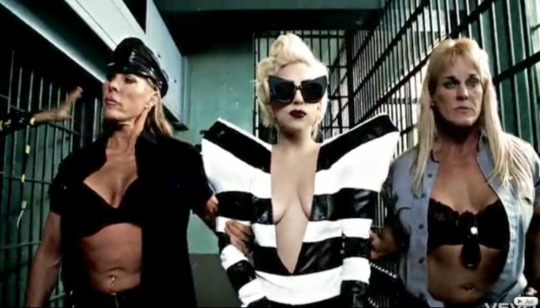
In hooks’ “The Oppositional Gaze: Black Female Spectators,” she writes about the “right to gaze.” Specifically, she references: “the politics of slavery, of racialized power relations, were such that the slaves were denied their right to gaze” (3). In these racialized power relations, she writes that Black people were not permitted to engage in the same freedom of watching, entertainment, or deriving pleasure from what they were seeing. This structure ultimately permeates to this day, as hooks writes that of the Black women she spoke to, none were excited to attend the movie theaters, knowing they would not be properly represented (4). How “Telephone” works in contrast with this trend is allowing spectators to look at and derive pleasure from the woman’s body. The idea of the oppositional gaze is a major part of the video because it challenges the ideas of dominant images that women must conform to. The video’s way of resisting the hegemonic gaze was to place the power into the hands of the women characters and for their bodies and strength to be shown without comparing it to that of a male character. hooks references Manthia Diawara to talk about the power of the spectator: “Every narration places the spectator in a position of agency; and race, class and sexual relations influence the way in which this subjecthood is filled by the spectator” (4) (309). Each person, specifically women, watching this music video could feel a sense of agency after experiencing women characters having power over their own bodies.

On the topic of bodies, the music video employs a semi-diverse cast of women in the video (the majority of women in the video are still white). Specifically, a lot of the women have stark differences about them like ethnicities, age, or sexual identity. In Audre Lorde’s “Age, Race, Class, and Sex: Women Redefining Difference,” she writes that emphasizing differences is usually taught to be bad or ignored, “or to view them as causes for separation and suspicion rather than as forces for change” (5). In “Telephone,” the differences between these women in prison or Beyonce and Gaga as criminals is distinctly outlined. It is unclear with what Gaga and the writers of the video were trying to accomplish with the “outsider-ness” of the characters in the video – if they were trying to make them look bad or powerful –but one could argue that these women could fit into the archetype of rebels, not caring about society’s rules for them, and that would empower the viewer. It could also be argued that these women are represented by a stereotype of women in prison: violent, erratic, and their homosexuality coming off as predatory and creepy. Mulvey references those who have stood “outside the circle of this society’s definition of acceptable women; those of us who have been forged in the crucibles of difference” (6). “Telephone” puts examples in its video of women on the “margins of society,” but their purpose of being there is unclear to the viewer.

Questions:
Do you think that the other women in the video are meant to be powerful or other-ed, just perpetuating a stereotype?
Do you think “Telephone” practices using the “oppositional gaze”?
How do you think the sexual nature of woman characters in the video differs from other media depictions we have seen?
youtube
“THOT SHIT” MEGAN THEE STALLION
At the beginning of the “Thot Shit” music video, the character of the senator is shown leaving a hate comment on one of Megan’s former music videos (“Body”). When he receives a phone call from Megan she tells him “the women that you are trying to step on are the women you depend on. They treat your diseases, they cook your meals, they haul your trash, they drive your ambulances, they guard you while you sleep. They control every part of your life. Do not fuck with them.” This quote is then the theme for the rest of the video. As the senator tries to escape, Megan and her dancers have taken over every occupation and are dancing in his face. Something interesting in this video is the idea of scopophilia that the senator is taking part in. While he is at first closing his blinds and leaving hate comments before gazing, now Megan and her dancers are forcing him to look, owning their image. Mulvey writes about scopophilia in media/cinema, especially tasteful/pleasurable looking (7). While so much of scopophilia in mainstream media is about privacy and what’s “implied,” it could be argued that Megan is subverting the narrative by using her body and her dancers’ bodies freely and without concerns of what is “forbidden.” It could be seen as an act of agency.
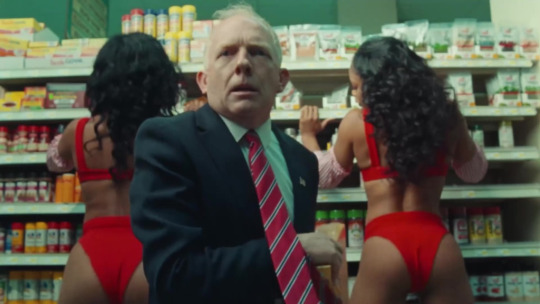
hooks herself may argue that “Thot Shit” is an example of Black women having that sense of agency – the Black women throughout the video have multiple careers while also having the freedom of sexuality. She writes: “Spaces of agency exist for Black people, wherein we can both interrogate the gaze of the Other but also look back, and at one another, naming what we see” (8). This quote encapsulates “Thot Shit” perfectly: a place that Black people can exist freely while also interrogating the gaze of the other. The music video is special because it is a way that Megan celebrates Black women but also the integral part that Black women play in society. They are portrayed as critical parts of a working society but also they dance in the video, owning their sexuality. The sexual nature of the women in the video ties to another example of hooks’ writings about Black women in film/media: the absence “that denies the 'body' of the Black female so as to perpetuate white supremacy and with it a phallocentric spectatorship where the woman to be looked at and desired is ‘white’” (9). hooks writes that too often Black women have been denied ownership and agency over their own bodies, but also the ability to be desired by white phallocentric audiences. By using the character of the senator, they show the inherent racism imposed against Black women - people criticize them but then still sexualize them. Something important to mention is Megan’s lyricism in this song - the word “thot” was coined in the hip-hop world as a derogatory term for a woman, similar to the word “slut,” “with added derision for being working class” (10) (WaPo article). The reclamation of this term is outright powerful because it is using a word that has been weaponized against Black women for years and she repurposes it to be something powerful. This subversion in itself can be tied to the work of the oppositional gaze - taking something used to oppress Black women and flipping it to empower them instead.

Rarely in popular media as big as “Thot Shit” do viewers see something with such a clear message. Megan does include a lot of Black female empowerment throughout her music and music videos, especially through sexual agency. Lorde writes, “Black women and our children know the fabric of our lives is stitched with violence and with hatred, that there is no rest. We do not deal with it only on the picket lines, or in dark midnight alleys, or in the places where we dare to verbalize our resistance. For us, increasingly, violence weaves through the daily tissues of our living … ” (11). “Thot Shit” is a form of protesting against the dehumanization and oppression of Black women in mainstream culture. Megan consistently brings Black women into the cultural conversation when they are neglected. Her empowerment is similar to that Lorde writes of: “It is learning how to stand alone, unpopular and sometimes reviled, and how to make common cause with those others identified as outside the structures in order to define and seek a world in which we can all flourish” (12).

Questions:
What are other ways that “Thot Shit” practices scopophilia and voyeurism in nuanced ways?
How is the video different from other music videos you have seen before?
How does “Thot Shit” work in conjunction with “Telephone”?
Works cited:
Mulvey, Laura, “Visual Pleasure and Narrative Cinema” in Film Theory and Criticism, 712. (New York: Oxford University Press, 2009)
Mulvey, Laura, “Visual Pleasure and Narrative Cinema.” 712
hooks, bell, “The Oppositional gaze: Black Female Spectators” in Feminist Film Theory, 307. (New York: New York University Press, 1999)
hooks, bell “The Oppositional gaze: Black Female Spectators.” 310
Lorde, Audre. "Age, Race, Class, and Sex: Women Redefining Difference." In Sister Outsider: Essays and Speeches, 112. Berkeley, CA: Crossing Press, 2007
Lorde, Audre “Age, Race, Class and Sex: Women Redefining Difference.” (112)
Mulvey, Laura, “Visual Pleasure and Narrative Cinema.”
hooks, bell, “The Oppositional Gaze: Black Female Spectators.” 308
hooks, bell, “The Oppositional Gaze: Black Female Spectators.” 310
O’Neal, Lonnae, “I had a thot but didn’t know it was a thing” The Washington Post, March 19, 2015
Mulvey, Laura, “Visual Pleasure and Narrative Cinema.” 119
Mulvey, Laura, “Visual Pleasure and Narrative Cinema.” (112)
@theuncannyprofessoro
9 notes
·
View notes
Text
I think it’s really interesting that Lady Gaga’s music video ‘defied’ Mulvey’s definition of the male gaze while still sexualizing the female figures in the video. It reminded me a bit of Charlie’s Angels in a way; women being badass but being sexy while doing it. Speaking to Butler’s interpretation of feminized acts, I thought it was notable that the characters in this video were engaging in traditionally masculine acts in a feminized (and sexualized) way. Why do you think this is? Does this contribute to or fight against the male gaze?
Panel Presentation: "Telephone" by Lady Gaga ft. Beyoncé & "Q.U.E.E.N." by Janelle Monáe ft. Erykah Badu
By Sophie Goldberg
youtube
"Telephone" by Lady Gaga ft. Beyoncé
The music video Telephone by Lady Gaga ft. Beyoncé serves as a continuation of "Paparazzi", where Gaga was arrested for killing her abusive boyfriend by poisoning his drink. It features a storyline where Lady Gaga is imprisoned but eventually escapes with Beyoncé's help, and they then go on to poison Beyoncé’s boyfriend and others in a diner and run from the police.
Laura Mulvey, “Visual Pleasure and Narrative Cinema”
Mulvey discusses the concept of the male gaze, where the camera represents the perspective of a heterosexual male viewer, objectifying female characters for the pleasure of the male audience. Beyonces and Lady Gaga’s portrayal aligns with certain aspects of the male gaze. The music video inevitably attracts male attention as the camera frequently lingers on their bodies and costumes, emphasizing their sexuality and allure. Mulvey states “Traditionally, the woman displayed has functioned on two levels: as erotic object for the characters within the screen story, and as erotic object for the spectator within the auditorium” (716). For example, when Lady Gaga first enters the prison everyone is wearing revealing clothes, and as she's pushed into her cell officers strip her down, leaving her with nothing but fishnets. Another instance occurs when Lady Gaga and three other women wear studded bikinis and engage in a provocative dance down the prison corridors. Spectators also see them through the lens of a security camera, furthering the voyeuristic aspect.

However in "Telephone," both Lady Gaga and Beyoncé also challenge traditional notions of passive femininity by taking on assertive, dominant roles. Mulvey states that “pleasure in looking has been split between active/male and passive/female’ (715). Women are presented as spectacle as the man's role is “the active one of forwarding the story,” (716) Lady Gaga and Beyoncé disrupt traditional narrative conventions by defying societal expectations of female passivity and instead taking control of their own narrative. Gaga and Beyoncé portray themselves as empowered and even dangerous figures as in the music video there are depicted acts of violence against men.
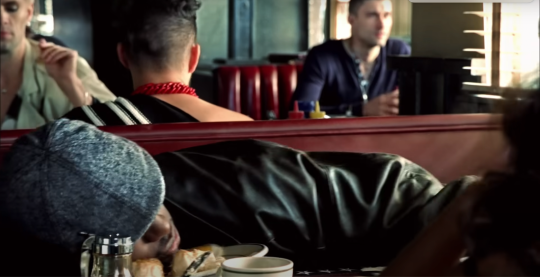
Bell Hooks, “Oppositional Gaze: Black Female Spectators”
Hooks discusses how Black female spectators often engage with media representations critically as “ mass media was a system of knowledge and power reproducing and maintaining white supremacy. To stare at the television, or mainstream movies, to engage its images, was to engage its negation of black representation.” (308) In "Telephone," Beyoncé's confident demeanor, assertive actions, and her role as the one with more agency than Lady Gaga—having the power to bail her out of jail—can be viewed as empowering examples of Black women asserting their autonomy within mainstream media.

Furthermore, Hooks critiques mainstream media for its tendency to eroticize and objectify Black women's bodies. In the video, there is a moment in which there is a high angle shot of Beyoncé's cleavage as she sits across from her boyfriend in the diner. Although, within the framework of the oppositional gaze, Beyoncé's character adopts a rebellious stance, refusing to conform to the gaze of desire and possession. Instead, she asserts her power by poisoning her misogynistic boyfriend and evading the police.
Audre Lorde, “Age, Race, Class, and Sex: Women Redefining Difference”
In Lorde's essay, she states “As women, we must root out internalized patterns of oppression within ourselves if we are to move beyond the most superficial aspects of social change.” (122) One such pattern is internalized misogyny, where women devalue themselves and others, which can lead to judgmental attitudes towards different lifestyles and choices. In "Telephone," Beyoncé exemplifies Lorde's words by not passing judgment on Lady Gaga's choices when she bails her out of jail. Despite their differing lifestyles, they unite against a common oppressor. Furthermore, societal expectations surrounding gender roles can also be internalized forms of oppression, such as conforming to domestic responsibilities. In the video Lady Gaga challenge these norms when she incorporates the stereotype of women in the kitchen within a segment titled “Lets Make a Sandwich”, but instead of adhering to these norms she instead puts poison in all of the food.

Furthermore, Lorde underscores the need to recognize differences among women as equals , relate across the differences, and utilize them to enrich collective visions and struggles. This is shown in the music video through the camaraderie and alliance depicted between Lady Gaga and Beyoncé. The video embraces diversity within feminism, showcasing representations of differences in sexuality and race, yet emphasizing a shared goal of empowerment. This sentiment is also echoed in the lyrics, “Boy, the way you blowin' up my phone , Won't make me leave no faster, Put my coat on faster, Leave my girls no faster”

youtube
"Q.U.E.E.N." by Janelle Monáe ft. Erykah Badu
Janelle Monáe's music video for 'Q.U.E.E.N.,' featuring Erykah Badu, serves as a freedom anthem within a science fiction dystopia. The title itself, 'Q.U.E.E.N.,' is an acronym representing marginalized communities: Queer, Untouchables, Emigrants, Excommunicated, and Negroid, reclaiming royal imagery to challenge traditional hierarchies of race, sexuality, and class. Monáe's Afrofuturist vision suggests a revolution, where marginalized communities and differences are celebrated rather than ostracized. The music video features rebel time-travelers that are frozen in a museum and brought to life by music. In the video's narrative, the song functions as part of a “musical weapons program” that disrupts the status quo, allowing the rebels to move through history and forge a new future in the present.
Laura Mulvey “Visual Pleasure and Narrative Cinema”
Mulvey argues that traditional cinematic narratives often reinforce patriarchal ideologies and power structures as they cater to a male gaze. The music video "Q.U.E.E.N." offers a narrative that challenges this as it features strong, empowered female protagonists who challenge traditional gender roles and expectations. Janelle Monáe wears a black-and-white tuxedo, disrupting the traditional notion of gendered clothing styles. The ladies all dance with each other and build eachother up such as when they reply and affirm each other “Is it peculiar that she twerk in the mirror? And am I weird to dance alone late at night? (Nah) And is it true we're all insane? (Yeah) And I just tell 'em, "No we ain't" and get down”. Here, the mention of twerking in the mirror is not sexualized but used to empower the female body.
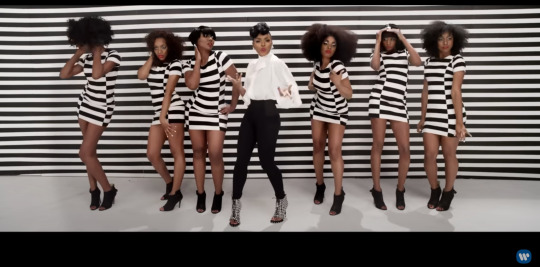
Bell Hooks, “Oppositional Gaze: Black Female Spectators”
The oppositional gaze is seen in the music video as Black female spectators engage with the visual representation of empowerment and resistance depicted in the video. Monáe uses both queerness and Blackness as examples of modern “freakishness.” Monáe doesn't assign a "freaky" status to queerness or Blackness herself, instead, she challenges listeners to interrogate why these identities are perceived as "freaky." She suggests that what society deems as "freaky" is simply the act of being true to oneself. The lyrics declare those differences as things to be proud of stating "Even if it makes others uncomfortable, I will love who I am". Monáe and Erykah Badu illustrate the way society "freakifies" their Blackness, showcasing how joy and celebration within Black culture are often viewed negatively due to racist stereotypes. The hook in the song highlights this, asking: “Am I a freak for dancing around? Am I a freak for getting down? I’m cutting up, don’t cut me down.” Black female spectators can find empowerment in seeing how the song recognizes differences and individuality as prideful assets.
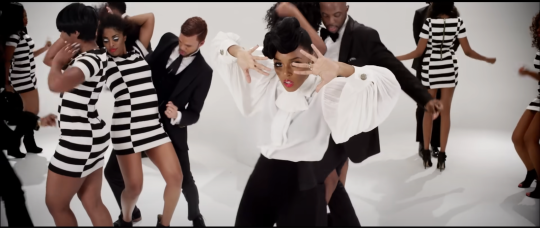
Audre Lorde, “Age, Race, Class, and Sex: Women Redefining Difference”
Lorde emphasizes the importance of recognizing the intersections of age, race, class, and sex in understanding women's experiences. The video highlights the oppression faced by diverse identities and experiences of Black women, as well as showcases their resilience in the face of it. The lyrics “Add us to equations but they'll never make us equal” resonates with Lorde’s claim that simply incorporating marginalized groups into existing systems does not address the underlying power imbalances or inequalities. Monáe’s next lyrics recognizes these inequalities stating “She who writes the movie owns the script and the sequel, So why ain't the stealing of my rights made illegal? They keep us underground working hard for the greedy, But when it's time pay they turn around and call us needy (needy)” Lorde further advocates for collective action and solidarity among women of different backgrounds to achieve liberation. In "Q.U.E.E.N.," the song's message of female empowerment and solidarity is highlighted as Monáe and Badu come together to celebrate different identities, for example sexual and racial identity. Janelle Monáe promotes unity and collaboration among women as she says “Will you be electric sheep? Electric ladies, will you sleep? Or will you preach?” According to Janelle Monáe it is up to this community and this generation to create its new norm and break down the walls that limit them.

Discussion Questions:
Lorde says ““By and large within the women’s movement today, white women focus upon their oppression as women and ignore differences of race, sexual preference, class and age. There is a pretense to a homogeneity of experience covered by the word sisterhood that does not in fact exist.” In the music video, do you think Lady Gaga is focusing on the oppression of just women in general and treating the experience of all women the same, or is she not necessarily ignoring the differences but the video just does not explicitly address them .
Is trying to make money and bring attention using our bodies promoting sexism even though it is our choice and feel empowering or confidence boosting
In music videos is using Sexuality and promiscuity still catering to the male gaze even if they are active agents in the narrative? What about in the cinema?
7 notes
·
View notes
Text
Laura Mulvey and bell hooks both critique a form of the ‘gaze’ (or fragmentation and objectification) regarding media representation from a feminist perspective. In Mulvey's "Visual Pleasure and Narrative Cinema," she argues that the portrayal of female characters in mainstream cinema is often constructed to satisfy the male gaze, reinforcing patriarchal ideology (1). Women are objectified, their agency diminished, serving primarily as objects of desire for the male protagonist or audience. This perpetuates the power dynamics of patriarchy, where men are the active subjects and women are passive objects for their consumption (2). Regardless of race or sexuality, viewers are conditioned to find pleasure in this portrayal due to its normalization within the dominant cinematic discourse.
Conversely, bell hooks in "Oppositional Gaze: Black Female Spectators" highlights how racial and sexual differences shape viewers' experiences. The oppositional gaze emerges as a critical response from marginalized viewers, particularly black women, who resist the passive consumption imposed by the dominant gaze (3). By actively engaging with and critiquing the images presented, they assert their agency and challenge hegemonic representations. This empowers viewers to reclaim their subjectivity and interpret media through their own perspectives, disrupting the singular narrative imposed by patriarchal and racial ideologies (4).
Overall, Laura Mulvey's analysis elucidates the pervasive influence of patriarchal ideology in shaping cinematic representations of women while bell hooks's concept of the oppositional gaze underscores the transformative potential of marginalized viewers to resist and reinterpret these narratives.
(1) Laura Mulvey, “Visual Pleasure and Narrative Cinema” in Film Theory and Criticism (New York: oxford University Press, 2009), 715. (2) Mulvey, “Visual Pleasure and Narrative Cinema,” 715-716. (3) bell hooks, “The Oppositional Gaze: Black Female Spectators” in Feminist Film Theory (New York: New York University Press, 1999), 309. (4) hooks, “The Oppositional Gaze,” 319.
Reading Notes 7: Mulvey to hooks
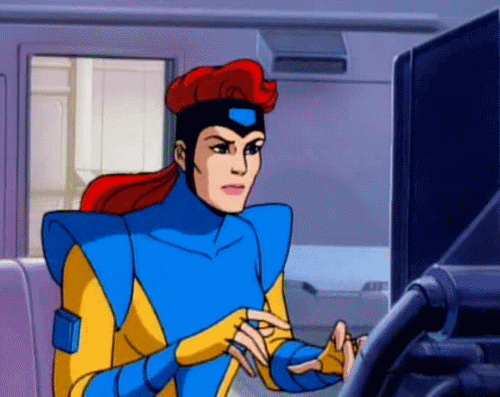
Shifting our visual analysis and critical inquiries to gender and sexuality, we will begin our explorations with Laura Mulvey’s “Visual Pleasure and Narrative Cinema” and bell hooks’s “Oppositional Gaze: Black Female Spectators.”
How does the spectacle of the female image relate to patriarchal ideology, and in what ways do all viewers, regardless of race or sexuality, take pleasure in films that are designed to satisfy the male gaze?
How do racial and sexual differences between viewers inform their experience of viewing pleasure, and in what ways does the oppositional gaze empower viewers?
@theuncannyprofessoro
17 notes
·
View notes
Text
I really liked the way you talked about representations of Black individuals in media as ‘transformed’ into other symbols. The more I think about it, the more connections I can find with media I personally grew up with and watched as a kid. How does the reclamation of monstrous characterizations (such as in Thriller) within marginalized groups speak to the complexities of identity, power dynamics, and agency within popular culture?
Psychoanalysis and Subjectivity
youtube
"Thriller" by Michael Jackson, released in 1983, is not just a song but an iconic cultural phenomenon, with its music video setting new standards for the industry. Directed by John Landis, the video is a mini horror film featuring Jackson as a charismatic young man transformed into a werewolf alongside his love interest, played by Ola Ray. The video showcases Jackson's unparalleled talent as a performer, with his electrifying dance moves and mesmerizing presence. Its groundbreaking special effects and narrative storytelling revolutionized the music video medium, becoming an instant classic. "Thriller" remains a timeless masterpiece, captivating audiences with its fusion of music, dance, and cinema, leaving an indelible mark on pop culture for generations to come.

Sigmund Freud's essay "The Uncanny" explores the concept of the uncanny, or the eerie feeling of discomfort or unease experienced when something seems strangely familiar yet simultaneously foreign or unsettling. Freud delves into various aspects of the uncanny, including its connection to repressed desires, the repetition of specific themes or motifs in literature and art, and its association with the return of the repressed. He ultimately suggests that the uncanny arises from the revival of primitive beliefs and fears, often related to death, castration, or the supernatural, which have been repressed into the unconscious mind. This reminds me of the entire motive of the music video, which is the aspect of death. Sigmund said, “the primitive fear of the dead is still so strong within us and always ready to come to the surface at any opportunity”(Freud, 369). Death is the main factor that spikes an uncanny feeling. Our conscious mind feels eerie when we can not define whether something is animate or inanimate. This can also be viewed through the lens of Fenon’s theory because of the transformation, performance, and cultural appropriation that happens in this video. A transformation can be seen as a metaphor for the way Black individuals have been historically portrayed as "other" or different in Western society, often associated with fear and negativity. However, it also ties into Lacan’s theory of identity and self-representation. The transformation can be interpreted as a commentary on the pressure for Black individuals to conform to white standards of beauty and behavior, which makes them see themselves differently because of social interactions.
Question: How often do you see the black community transform into something other than being black, and how much of an impact do you think it has?
youtube
"Black or White" is a groundbreaking music video by the iconic artist Michael Jackson, released in 1991. Directed by John Landis, the video captivates audiences with its innovative visual effects and powerful message of racial unity. Opening with a diverse array of faces from around the world morphing into one another, the video symbolizes the interconnectedness of humanity. Jackson's electrifying dance moves and charismatic performance are showcased against a backdrop of vibrant sets and dynamic choreography. The video's climax features a montage of people breaking through barriers, emphasizing diversity, acceptance, and equality themes. Through its striking imagery and infectious rhythm, "Black or White" remains a testament to Jackson's unparalleled talent and a timeless anthem for social change and harmony.

Frantz Fanon's essay "The Negro and Psychopathology" delves into the psychological impact of colonialism and racism on Black individuals. Fanon explores how the experience of oppression and discrimination leads to a profound sense of alienation, identity crisis, and psychological trauma among Black people. Frantz Fanon said, “The Negro recognizes the unreality of many of the beliefs that he has adopted with reference to the subjective attitude of the white man”(Fanon, 115). He implies that Black individuals have internalized certain beliefs or attitudes, possibly about themselves or about the world, that are based on the perspective or viewpoint of white people. However, they have come to recognize that some of the beliefs held by white people are not grounded in reality or are false. This means that things that are said about the black community usually is said to make them feel bad. The saddest part is that it is so engraved in our system that naturally, it just reproduces.
One aspect that correlates with Fanon's ideas is Jackson's own experience of racial identity. Throughout his life, Jackson grappled with questions of race and belonging, facing scrutiny and pressure to conform to societal expectations of blackness. His changing appearance, particularly his skin color, sparked speculation and debate about his racial identity and self-image. Fanon would likely view Jackson's transformation as a manifestation of the internalized racism prevalent in societies where lighter skin is often associated with beauty and success. This also makes me think about how his skin transformation can be perceived as uncanny. The transformation can be perceived as uncanny due to its combination of familiarity and strangeness, its psychological implications, the public reaction it elicited, and its broader cultural significance. It made him seem familiar but also unfamiliar.
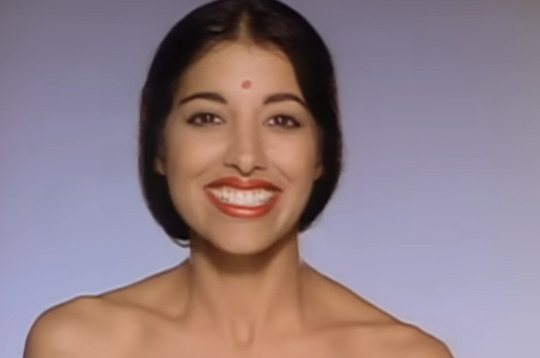
This scene of the music video resonates with Jacques Lacan’s “The Mirror Stage as Formative of the Function of the I” through its exploration of identity, diversity, and unity. Just as Lacan explains that the mirror stage marks a pivotal moment in the formation of the self, the video showcases individuals from diverse ethnic backgrounds, highlighting the complexity of identity formation in a multicultural world. Lacan said, "Whence it is that the relation of the individual subject to his own images is apprehended, prior to any grasp of it by the self, in a specular relation of the organism to its reality, and that, whatever may be the degree of elaboration of the imaginary function, its mediation is necessarily situated in the intersubjective dialectic"(Lacan). This statement explains that individuals have an inherent, perhaps unconscious, relationship with their mental images or representations, which reflects their perception of reality. This relationship is influenced by interpersonal dynamics and interactions, highlighting the interconnectedness between self-awareness and social experiences. Social interactions really change the way one views oneself, which sadly becomes subconscious critiquing.
Question: Do you guys view transformation as uncanny, and why do you think some people do? Do you think when you first understood your image was the only time you fully saw/respected yourself?
Sources
Freud, Sigmund. "The Uncanny." The Standard Edition of the Complete Psychological Works of Sigmund Freud, edited by James Strachey, vol. 17, Hogarth Press, 1955, pp. 219-256.
Lacan, Jacques. "The Mirror Stage as Formative of the Function of the I." Écrits: A Selection. Translated by Bruce Fink, W.W. Norton & Company, 2002, pp. 75-81.
Fanon, Frantz. "The Negro and Psychopathology." Black Skin, White Masks, translated by Charles Lam Markmann, Grove Press, 2008, pp. 99-127.
9 notes
·
View notes
Text
Analytical Application 4: Psychoanalysis and Subjectivity
Misrecognition

Definition: Misrecognition is a term that can be applied to Fanon’s theories of perception. Fanon discusses how colonial ideologies perpetuate a sort of misrecognition, distorting the perception of both the colonizer and the colonized, leading to psychological conflicts and power imbalance, (1). This definition of misrecognition involves the failure to accurately perceive or understand oneself or others, often resulting in distorted relationships or self-conceptions.
Analysis: In a scene toward the beginning of "Squeeze", Tooms takes a polygraph test after being caught for the first time. Surprisingly to the viewer, he passes; other than lying to a particular question added by Agent Mulder. The question was if he was over 100 years old (Longstreet, 1993, 17:46). Initially, Tooms' ability to deceive the polygraph test reinforces the other detective, Agent Fuller’s, confidence in his own perceptions and investigative methods. However, Agent Mulder's insertion of a seemingly absurd question about Tooms' age reveals a deeper layer of misrecognition at play.
Agent Mulder's question challenges the established framework of the investigation by suggesting the possibility of paranormal interference or unconventional explanations for Tooms' actions. Yet, instead of considering this alternative perspective, Fuller dismisses Mulder's query and treats him and Scully with disdain, even letting Tooms go despite his lies (Longstreet, 1993, 18:11). This reaction highlights a form of misrecognition wherein Agent Fuller fails to accurately perceive or understand the implications of Agent Mulder's question. Instead of recognizing it as a legitimate avenue for investigation, he interprets it as a sign of incompetence or irrationality on the part of both Agents Mulder and Scully.
This misrecognition leads to distorted relationships and power imbalances within the investigative team. Agents Mulder and Scully are marginalized and undermined for their willingness to challenge conventional explanations, while Agent Fuller and the other team of detectives assert their authority and superiority based on their adherence to established norms and procedures. This dynamic perpetuates a cycle of misrecognition, reinforcing the existing power structures and hindering the pursuit of truth. Overall, this scene from "Squeeze" exemplifies how misrecognition can distort perceptions and lead to interpersonal conflicts and power imbalances, ultimately impeding the progress of the investigation and perpetuating ignorance.
Unheimlich

Definition: "Unheimlich," a term introduced by Sigmund Freud, refers to the opposite of "heimlich" and denotes the eerie, unsettling, or unfamiliar aspects of the uncanny, (2). It describes experiences or phenomena that evoke a sense of strangeness, discomfort, or unease by defying expectations or challenging one's understanding of reality.
Analysis: The polygraph scene described above can also be applied to the definition of unheimlich. Agent Fuller is quick to dismiss the possibility of Tooms being over 100 years old. This is likely due to the unheimlich nature of this claim. Tooms' potential age defies conventional expectations and challenges the agents' understanding of reality, evoking a sense of strangeness and discomfort.
Agent Fuller's reaction reflects a typical response to encountering the unheimlich – a swift rejection or denial of the possibility of such a phenomenon. This knee-jerk dismissal is a defense mechanism employed to maintain a sense of stability and coherence in the face of the unknown or unsettling. Furthermore, the unheimlich nature of Tooms' potential age introduces an element of uncertainty and ambiguity into the investigation. It disrupts the agents' sense of order and control, as they are forced to confront the possibility of phenomena beyond their comprehension. Fuller’s insistence on rational explanations (along with the rest of his team) reflects a desire to maintain a sense of order and control in the face of the inexplicable, highlighting the human tendency to reject or rationalize experiences that challenge established beliefs.
The dismissal of Tooms' potential age also highlights the agents' reliance on rationality and empirical evidence in their investigative approach. The unheimlich challenges their reliance on established norms and scientific principles, pushing them outside their comfort zone and into the realm of the unknown. Overall, this scene exemplifies how the unheimlich can disrupt perceptions and challenge conventional understanding, leading to discomfort and uncertainty. By introducing elements that defy explanation or rationalization, the unheimlich forces individuals to confront the limitations of their knowledge and confront the inherent strangeness of existence.
Uncanny

Definition: The uncanny, as described by Sigmund Freud, refers to a feeling of unsettling strangeness or eeriness provoked by something that is familiar yet unfamiliar at the same time. It arises when the boundaries between the familiar and the unfamiliar, the real and the imaginary, become blurred, triggering a sense of discomfort or anxiety, (3). The uncanny often emerges in encounters with objects, situations, or experiences that evoke repressed memories, primal fears, or existential dread.
Analysis: In the climactic scene from "Squeeze," where Scully is attacked by Tooms in her own home, the concept of the uncanny is palpably evident. As Scully innocently prepares for a bath in her bathroom (Longstreet, 1993, 36:45), the atmosphere is initially serene and mundane. However, the uncanny begins to manifest as she notices a strange liquid dripping from the vent above her bathtub onto her hand (Longstreet, 1993, 37:35). This unexpected occurrence blurs the boundaries between the familiar and the unfamiliar, instilling a sense of unease and anticipation in both Scully and the audience.
The eerie dripping liquid serves as a trigger, evoking repressed memories and primal fears within Scully. It symbolizes the intrusion of the unknown and the uncanny into the safety of her home, disrupting her sense of security and normalcy. The escalating, eerie plucked string music heightens the tension, intensifying the feeling of impending danger and impending dread.Scully's frantic rush to grab her gun further underscores the uncanny nature of the situation. In this moment, she is confronted with the realization that the familiar space of her home has been infiltrated by an unseen threat, blurring the boundaries between reality and imagination.
The climax of the scene occurs when Tooms, unseen and unknown, attacks Scully from behind through the air vent (Longstreet, 1993, 38:09). This sudden, unexpected assault embodies the quintessence of the uncanny – a shocking encounter with the unfamiliar and the unsettling within the confines of the familiar and the domestic. Coupled with the inhuman appearance of Tooms with his contacts and sharp teeth, this scene serves as the perfect encapsulation of the uncanny, employing atmospheric tension and unexpected twists to evoke a sense of discomfort and anxiety in both the characters and the audience.
Mirror Stage

Definition: The mirror stage is a concept introduced by Jacques Lacan, referring to a developmental phase in which an infant recognizes their own image in a mirror, thereby forming a sense of selfhood, (4). This stage is crucial for the formation of the ego and the development of a coherent identity, as the child identifies with the reflected image and begins to differentiate themselves from the external world, or the ‘other.’
Analysis: The concept of the mirror stage, as introduced by Jacques Lacan, can be vividly applied to the scene where FBI agents Fox Mulder and Dana Scully finally confront and capture the serial killer Eugene Victor Tooms following the attack on Scully (Longstreet, 1993, 38:43), marking a pivotal moment of self-reflection and existential reckoning for the protagonists. As Mulder and Scully find themselves in a tense standoff with Tooms in Scully’s home once he is apprehended, their encounter serves as a metaphorical mirror reflecting back their own identities and fears. Tooms, with his ability to contort his body and defy conventional understanding, becomes a distorted reflection of humanity itself, challenging Mulder and Scully's perceptions of themselves and their place in the world.
In this moment, the mirror stage is exemplified as Mulder and Scully are confronted with the darker aspects of human nature that Tooms embodies. The encounter forces them to confront their own vulnerabilities, fears, and limitations, as they grapple with the incomprehensible threat posed by the elusive killer. This confrontation with the uncanny, represented by Tooms, triggers a profound sense of existential dread and self-doubt, as Mulder and Scully are forced to question the very foundations of their beliefs and assumptions.Furthermore, the scene underscores the transformative nature of the mirror stage, as Mulder and Scully undergo a process of introspection and self-discovery in the face of adversity. Through their encounter with Tooms, they are compelled to confront their own inner demons and reevaluate their understanding of themselves and the world around them.
Collective Catharsis

Definition: Fanon's work explores how collective catharsis can be crucial for marginalized groups to address and overcome psychological traumas. He states that every society must have an outlet for collective aggression and emotion to be released, (5). Put simply, collective catharsis is the release of emotion within a community that has a shared hardship; in Fanon’s context, that hardship is usually related to oppressive forces.
Analysis:
In the closing scene of "Squeeze," (Longstreet, 1993, 39:48) the retired police officer's reaction to the news of Eugene Victor Tooms' capture exemplifies Fanon's concept of collective catharsis. As the officer gazes at the newspaper with a palpable sense of relief and closure, his response reflects the release of pent-up emotions within the community that has endured the terror of Tooms' reign of terror.
The act of ripping the newspaper (Longstreet, 1993, 39:53) serves as a symbolic gesture of shedding the collective burden of fear and anxiety that has plagued the community. This moment of catharsis represents a communal release from the psychological trauma inflicted by Tooms' actions, providing a sense of closure and resolution to those affected by his crimes. Furthermore, the transition to Tooms sitting in his cell as Agents Mulder and Scully observe him through the glass highlights the transformative power of collective catharsis. As Mulder and Scully reflect on the culmination of their efforts to apprehend Tooms, they too engage in a form of collective catharsis. Their shared experience of overcoming obstacles and facing adversity together allows them to find solace and validation in their pursuit of justice.
Moreover, Mulder and Scully's moment of reflection underscores the importance of collective catharsis in addressing and overcoming psychological traumas. Despite facing resistance and skepticism from their peers, they find solidarity and support in each other, using the space to process their emotions and reaffirm their commitment to their cause. Overall, this scene from "Squeeze" beautifully illustrates how collective catharsis can serve as a transformative force, enabling individuals and communities to confront and overcome shared hardships and traumas. Through collective action and solidarity, they find strength and resilience in the face of adversity, ultimately reclaiming agency and empowerment in the process.
(1) Frantz Fanon, “The Negro and Psychopathology” in Black Skin White Masks, 127, 146-150. Translated by Charles Lam Markmann. London: Pluto Press, 1986. (2) Sigmund Freud. “The ‘Uncanny’” in Collected Papers Volume IV: Papers on Metapsychology, 370. London: Hogarth Press, 1948. (3) Ibid. (4) Jacques Lacan, “The Mirror Stage as Formative of the I Function as Revealed in Psychoanalytic Experience” in Écrits: The First Complete Edition in English, 76. Translated by Bruce Fink, Héloise Fïnk, and Russell Grigg. New York: W. W. Norton & Company, 2006. (5) Fanon, “The Negro and Psychopathology”, 112.
0 notes
Text
Breaking Barbie: Interrogating Gender, Power, and Capitalism Through Critical Analysis

Introduction
Barbie (2023) broke the internet and the box office this past Summer when it was finally released in theaters to the delight of moviegoers worldwide. Its feminist message, regardless of how capitalistic and surface-level, resonated with many viewers and shook the film industry through its comical and easily approachable narrative for all age groups. With its many social commentaries, this film is ripe for analysis through the lens of various theorists whom we have discussed and read about in class. For my analysis, I will be applying the theories of Althusser, Horkheimer & Adorno, Saussure, and Deleuze to both the diegesis and real-world implications of Barbie (2023). In scenes like Barbie’s Dreamhouse party scene, Barbie (2023) touches upon what happens when you no longer fit in the status quo. Using Saussure and Deleuze’s theories to analyze symbols, signs, and elements of repetition, we can apply Althusser and Horkheimer & Adorno’s Marxist theories of the state apparatus and culture industry to the film’s themes. While seemingly attempting to break free from these oppressive structures, Barbie (2023) continues to uphold and even perpetuate the culture industry and consequently the state apparatuses that uphold it. I will first explore the similarities and differences between the aforementioned theorists’ works regarding critiques of power and ruling ideologies before delving into a scene from Barbie (2023).
Section 1: Critiques of Ideology and Power from Althusser, Horkheimer & Adorno, Saussure, and Deleuze
The works of Louis Althusser, Max Horkheimer, Theodor Adorno, Ferdinand de Saussure, and Gilles Deleuze represent significant contributions to various fields such as philosophy, sociology, linguistics, and cultural studies. While each of these theorists approaches their respective topics from different angles and employs distinct methodologies, there are commonalities in their ideas and concepts that underscore broader themes of power, ideology, language, and culture. One overarching commonality among these theorists is their critical stance toward dominant structures and systems in society. Whether it be Althusser's critique of ideological state apparatuses, (1) Horkheimer and Adorno's analysis of the culture industry, Saussure's examination of language as a system of signs, or Deleuze's exploration of repetition and difference, all these thinkers are concerned with uncovering and interrogating the mechanisms through which power operates and shapes our understanding of the world, including application to visual texts.
Central to Althusser's theory of ideology is the notion that ideology functions through institutions and practices that reproduce and reinforce existing power relations and repression (2). He argues that ideologies are not merely sets of ideas but are material practices that interpolate individuals as subjects within a given social order (3). This idea resonates with Horkheimer and Adorno's critique of the culture industry, wherein they contend that mass culture, far from being a realm of genuine expression and creativity, is instead a tool of manipulation and control, serving the interests of capital and perpetuating conformity (4).
Saussure's structuralist approach to language similarly reveals how systems of signs and signifiers shape our understanding of reality. His distinction between langue (the abstract system of language) and parole (individual speech acts) emphasizes the social and symbolic nature of language, highlighting how meanings are not inherent in words but are rather constructed through social conventions and relations. This insight into the arbitrary nature of linguistic signs resonates with the broader theme of the constructed-ness of reality and the role of discourse in shaping our understanding of the world. Deleuze's concept of repetition and difference offers a unique perspective on how identity and meaning are produced through processes of repetition and variation. For Deleuze, repetition is not simply the replication of the same but involves difference and variation, leading to the emergence of new forms and possibilities (6). This idea presents a new perspective of critical analysis from which to view parody and pastiche.
Moreover, all these theorists share a commitment to critical inquiry and a rejection of essentialist and deterministic views of society and culture. Instead, they emphasize the importance of understanding the contingent and historical nature of social phenomena, as well as the potential for resistance and transformation. They also all critique capitalism (or provide new tools to critique it) in one way or another. In conclusion, while Louis Althusser, Max Horkheimer, Theodor Adorno, Ferdinand de Saussure, and Gilles Deleuze approach their respective topics from different angles and disciplines, their works converge around key themes such as power, ideology, language, and culture. Through their critical analyses, they challenge us to question the dominant structures and systems that shape our lives and to envision alternative ways of understanding and organizing society.
Section 2: Difference in Influence, Approach, and Methodology
While theorists Louis Althusser, Max Horkheimer, Theodor Adorno, Ferdinand de Saussure, and Gilles Deleuze share common critiques about power, ideology, language, and culture, their approaches and methodologies also exhibit notable differences. These distinctions arise from their varying intellectual backgrounds and overall theoretical frameworks. Firstly, Althusser's structural Marxist approach focuses on the role of ideology and its interplay with state apparatuses in maintaining the dominance of the ruling class. His emphasis on the effects of the state apparatus on individuals reflects his commitment to understanding social reproduction through the lens of Marxist theory. Althusser highlights that “[i]deology represents the imaginary relationship of individuals to their real conditions of existence,” (7) in his thesis. In contrast, Horkheimer and Adorno adopt a critical theory perspective that incorporates elements of Marxist analysis with insights from sociology and cultural critique. Their work on the culture industry explores how mass media and cultural production serve to perpetuate conformity and alienation in capitalist societies, emphasizing the role of culture in shaping collective consciousness rather than in the individual (8).
Saussure's structural linguistics diverges slightly from these sociopolitical concerns, focusing instead on the structure and function of language as a system of signs (which can, of course, be applied sociopolitically). His focus is on the synchronic analysis of language, as opposed to historical or diachronic approaches. While Horkheimer & Adorno address the ideological dimensions of language, Saussure's work provides a more formal and abstract framework for understanding linguistic systems and the influences they may have on encoded and decoded messages. He does so by distinguishing the symbol from the sign and discussing arbitrary linguistic connections in a way that can be applied to various visual texts (9). Deleuze, on the other hand, offers a departure from both Marxist and structuralist perspectives with his concept of difference and repetition. Deleuze's philosophy challenges traditional notions of identity and subjectivity, particularly exploring the novel elements of repetition compared to difference. In comparison to Saussure’s focus on language, Deleuze explores repetition as a concept applicable to philosophy and art.
Furthermore, these theorists differ in their methodological approaches and styles of writing. Althusser's work tends to be more systematic and rigorous, drawing heavily on Marxist theory and psychoanalysis, while Horkheimer and Adorno's writing is characterized by its interdisciplinary scope. Saussure's Course in General Linguistics presents a structured exposition of his ideas, rooted in the analysis of language as a system, whereas Deleuze's writing is often more abstract and poetic, engaging with concepts through creative and unconventional means while regularly drawing upon his influences. Overall, while Louis Althusser, Max Horkheimer, Theodor Adorno, Ferdinand de Saussure, and Gilles Deleuze share common themes and concerns in their respective works, their differences in approach, methodology, and intellectual backgrounds affect their theoretical analysis and the ways in which we can apply them to visual texts.
Section 3: Barbie as a Microcosm and Perpetuant of the Culture Industry
youtube
An iconic, standout scene from the Barbie film is one toward the beginning, where Stereotypical Barbie hosts a blowout party at her Dreamhouse with all of her friends. This scene, when closely analyzed, is a perfect perpetuant of the culture industry, particularly related to the film and the music and memorabilia made in the film’s image. Directly following a scene where Ken asks Barbie if he can come over (to which she replies that she’s doing nothing much, just hosting a big party), this party scene hosts a colorful set and array of costumes with visually pleasing lighting and choreography.
The focus of the camera shifts with the choreography as each of the Barbies are highlighted while Dua Lipa’s original song plays diegetically. Characters are dressed in mostly gold, silver, and white shining dresses, bodysuits, and tracksuits, and the diversity of the Barbies is highlighted as they dance; though some characters (such as Midge and Alan) are cut to for comedic effect. The lighting is blue and purple and the hot pink set-pieces pop against the shimmering background. It is truly theatrical and stunning to visually take in. Stereotypical Barbie dances with a Ken aside from her own Stereotypical Ken, leading to a humorous dance and challenge between the two Kens.
As she dances with the other Barbies, Stereotypical Barbie begins to talk with her friends about how this is the best night ever, and so is yesterday and tomorrow and every day in Barbieland, before she asks if “you guys ever think about dying?”, prompting the music to cut and everyone to stop dancing and look at Barbie in disgust and confusion. Stereotypical Barbie then stands and smiles awkwardly before brushing off her statement and covering it up, saying that she is “just dying to dance!”, allowing the music to continue to play and everyone to keep dancing. This moment highlights the shift in the narrative that changes Barbie’s journey and purpose in the story; she no longer fits the status quo of Barbieland. This is, however, not due to her outward appearance like it is for Alan or Midge, but instead because of her internal thoughts.
Louis Althusser's concept of ideology and ideological state apparatuses provides a lens through which to understand the cultural significance of Barbie as a symbol of idealized femininity. The blowout party at Barbie's Dreamhouse can be seen as a manifestation of the ideological apparatuses at work, perpetuating normative gender roles and consumerist values. Barbie, as the quintessential embodiment of femininity, hosts a glamorous event that reinforces notions of beauty, wealth, and social status, all of which are central to the ideology of consumer capitalism. Further than this, the notions of femininity pushed in Barbie seem to be shifting with the times. Barbieland’s society is a matriarchy, composed of strong, ‘girlboss’ symbols of femininity that play important roles in the Barbieland job market and are dominant in their romantic relationships. Considering the new wave of feminism composed of many working women, this scene highlights the concept of a strong working woman and introduces more standards and goals to obtain as a woman in modern society.
Max Horkheimer and Theodor Adorno's critique of the culture industry sheds light on the commodification of Barbie and the spectacle of the party scene. The elaborate costumes, choreography, and Dua Lipa's original song contribute to the immersive experience designed to captivate and entertain audiences. However, beneath the surface glamour lies a manufactured reality, carefully constructed to sell merchandise and perpetuate the Barbie brand. The scene's emphasis on visual spectacle and consumerist excess reflects the logic of the culture industry, where entertainment serves as a means of social control and distraction. Considering the feminist themes of the film, this scene may push a sense of false consciousness in the context of the film as a whole, giving the viewer a magical escape from the real world. Moreover, the scene's emphasis on visual spectacle and consumerist excess reflects the culture industry's tendency to reduce complex human experiences to easily consumable commodities. Barbie herself becomes a symbol of this commodification, her image meticulously crafted and marketed to embody an unattainable ideal of femininity.
Ferdinand de Saussure's post-structuralist approach to language offers insights into the symbolic significance of Barbie's dialogue during the party scene. When Barbie abruptly interrupts the festivities with her existential question about death, the reaction of her friends underscores the power of language to disrupt social norms and challenge ideological conformity. Barbie's deviation from the script of superficial pleasantries exposes the fragility of the ideological facade, revealing the existential angst lurking beneath the surface of Barbie's perfect world.
Gilles Deleuze's concept of repetition and difference highlights the main characters of Barbie and illuminates Barbie's moment of introspection and its implications for her journey as a character. Throughout much of the choreography, background dancers repeat dance moves and move as a unit to highlight the difference in movement of the important characters. As well as this, by questioning the meaning of life amidst the spectacle of the party, Barbie disrupts the repetitive cycle of life in Barbieland and opens herself up to new possibilities of self-discovery and transformation, leading to the rest of the film. Her awkward attempt to reconcile her existential musings with the frivolity of the party underscores the tension between authenticity and artifice, signaling a departure from the status quo of Barbieland and the beginning of a journey toward self-realization.
Conclusion
The works broken down in this synthesis give a basis for analytical reasoning to deconstruct the many layers of Barbie’s encoded messages. From the glittery costumes to the catchy tunes, Barbie successfully draws upon feminist ideals and pushes a conformist style of femininity onto viewers that is relevant to current events to, at the end of the day, make a profit with merchandise at the box office. Scenes like the dream-house party scene serve as easily consumable, fun visual spectacles to placate the viewer in line with the culture industry cycle. However, beneath the glossy, plastic surface of Barbie's world lies a deeper commentary on contemporary culture, where ideals of beauty and success are molded and manufactured for mass consumption. In interrogating the cultural significance of Barbie through the lens of Althusser, Horkheimer & Adorno, Saussure, and Deleuze, we are prompted to question not only the messages encoded within her image but also the broader societal norms and values that shape our collective imagination.
(1) Althusser, 92. (2) Althusser, 93-94. (3) Althusser, 88. (4) Adorno & Horkheimer, 119. (5) Saussure, 9-13. (6) Deleuze, 13-14. (7) Althusser, 100. (8) Adorno & Horkheimer, 122. (9) Saussure, 67-68.
1 note
·
View note
Text
Sorry in advance for this post’s length! I tried to keep it brief :)
Freud, Lacan, and Fanon each explore the role of psychoanalysis in relation to unconscious fear, social constructs, and representation in their respective texts. People often describe an experience as uncanny when it evokes a sense of discomfort or eeriness due to its familiarity combined with strangeness. In Freud's "The Uncanny," he suggests that the uncanny arises when something is both familiar and unfamiliar at the same time, (1) triggering a conflict within the psyche. However, an occurrence that appears uncanny but is not can be explained through Freud's concept of repression, where the uncanny feeling may stem from repressed desires or fears being brought to the surface, (2). Thus, what appears uncanny may be a manifestation of the unconscious rather than an inherently uncanny phenomenon.
The relation between personal neurosis and social passions is explored in Lacan's "The Mirror Stage." Lacan argues that the formation of the ego, or "I," is a pivotal moment in an individual's development, occurring during the mirror stage when a child first identifies with their reflection as being a representation of the self, (3). This identification with the image establishes the ego, but it also introduces a fundamental alienation from oneself. This alienation extends to social interactions, where personal neuroses are influenced and shaped by societal norms and expectations with the formation of the other. Therefore, personal neurosis cannot be fully understood without considering its connection to social structures and collective passions.
Frantz Fanon's "The Negro and Psychopathology" sheds light on how oppressed and marginalized viewers are alienated when they are not represented in visual texts. Fanon argues that colonialism and racism contribute to the dehumanization and othering of marginalized groups, (5) leading to their exclusion from dominant cultural narratives. As a result, when these groups encounter visual texts that lack representation or misrepresent them, they experience a profound sense of alienation and disconnection from their own identities, (6). This alienation reinforces existing power dynamics and perpetuates the marginalization of oppressed groups within society.
Each of these authors explore a different part of the human experience and its influence on the consumption of visual texts, but each theory works to strengthen the others further as well.
(1) Sigmund Freud. “The ‘Uncanny’” in *Collected Papers Volume IV: Papers on Metapsychology*, 370*.* London: Hogarth Press, 1948.
(2) Freud, “The ‘Uncanny’”, 394-396.
(3) Jacques Lacan, “The Mirror Stage as Formative of the *I* Function as Revealed in Psychoanalytic Experience” in *Écrits: The First Complete Edition in English*, 75-76. Translated by Bruce Fink, Héloise Fïnk, and Russell Grigg. New York: W. W. Norton & Company, 2006.
(4) Lacan, “The Mirror Stage”, 79-80.
(5) Frantz Fanon, “The Negro and Psychopathology” in *Black Skin White Masks,* 153-157. Translated by Charles Lam Markmann. London: Pluto Press, 1986.
(6) Fanon, “The Negro and Psychopathology”, 158-162.
Reading Notes 6: Freud to Lacan to Fanon
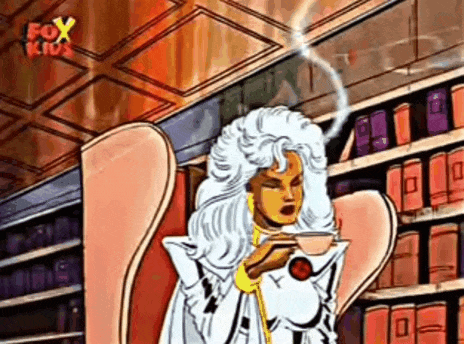
We look to Sigmund Freud’s “The Uncanny,” Jacques Lacan’s “The Mirror Stage as Formative of the Function of the I,” and Frantz Fanon’s “The Negro and Psychopathology” for our inquiry into the functions of psychoanalysis and subjectivity when examining visual texts.
Why do people call an experience or event uncanny, and what makes an occurrence that appears to be uncanny but is not uncanny?
What is the relation of personal neurosis to social passions?
In what ways are oppressed and marginalized viewers alienated when they are not or rarely represented?
@theuncannyprofessoro
18 notes
·
View notes
Text
Analytical Application 3: Poststructuralism and Postmodernism
Repetition
Definition: In Difference and Repetition, Deleuze explains that “repetition is attributed to elements which are really distinct but nevertheless share strictly the same concept,” (1). Repetition can be described as the reiteration of events, ideas, or forms in a way that produces variation of the original object in a novel way.
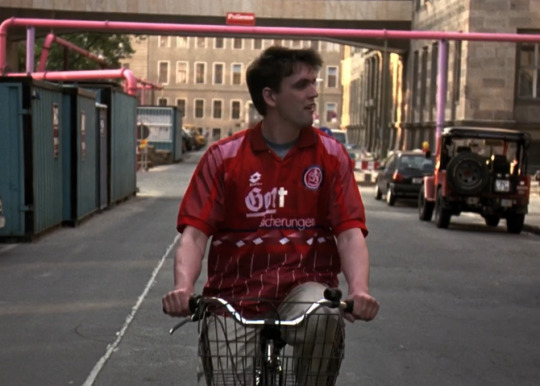
Analysis: In "Run Lola Run" (1998), the plot revolves around instances of repetition with Lola repeating the same journey to retrieve 100,000 marks three times with minor differences altering the overall outcome. As a result, there are multiple examples of repeated actions leading to different outcomes, but one example that stands out is Lola’s interaction with the young man who offers her his bike for 50 marks, (Tykwer, 1998, 15:49). Each time the timeline of the story repeats, she has the same repeated interaction with the man but with subtle, notable differences. The way their interaction unfolds also ends up affecting the rest of the young man’s life path, with the minor differences in each interaction eventually leading to vastly different outcomes. When first encountering the man, Lola refuses his offer. This leads to an intercut compilation of photos of the man’s future where he is intercepted by two men and beat up before meeting his future wife (Tykwer, 1998, 15:58). During the second instance of Lola’s encounter, however, she points out that the bike the man is riding is stolen, (Tykwer, 1998, 37:39). Afterwards, the intercut photos show that the man leads the rest of his life on the streets, a stark contrast to the first outcome (Tykwer, 1998, 37:44). This example perfectly encapsulates Deleuze’s definition of repetition. Although Lola has multiple run-ins with the man on the bike, each instance has novel differences that lead to different paths in the end, building upon the original instance of the interaction. Not only is the interaction reproduced in a novel way; the after-effects also echo the same originality.
Generality
Definition: In the Introduction of Deleuze’s Difference and Repetition, he explains that “[g]enerality presents… the qualitative order of resemblances and the quantitative order of equivalences. Cycles and equalities are their respective symbols. But in any case, generality expresses a point of view according to which one term may be exchanged or substituted for another,” (2). In simple terms, "generality" can be understood in two main ways: by looking at how things are visually similar to each other and by looking at how things are equal or equivalent to each other. This generality then can lead to the exchange or substitution of the two things being compared, creating a universal or relatable experience.
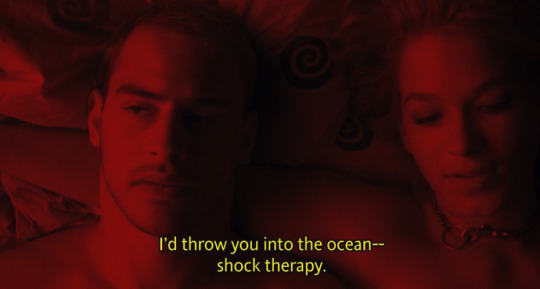
Analysis: Deleuze’s theory of generality can be applied to the scene of Manni and Lola smoking in bed together (Tykwer, 1998, 52:32) in "Run Lola Run" (1998). Throughout the entirety of the film, Lola's primary objective is to save Manni from a dire situation, which adds depth to their relationship. In this particular scene, as Manni and Lola lay together in bed, engaging in a conversation about Manni's hypothetical death, the audience gains insight into the complexities of their relationship. This scene serves as a poignant portrayal of love and loss, further establishing a sense of generality within the audience. By witnessing the intimate exchange between Manni and Lola, viewers are offered a glimpse into their emotional bond, allowing for a more relatable or generalized understanding of Lola's motivations and actions throughout the film. The scene provides context to Lola's unwavering determination to save Manni, as her love for him is palpable in their shared moments of vulnerability and reflection. The use of red lighting in the scene also enhances the emotional resonance, evoking feelings of passion and intensity associated with love. This visual element reinforces the audience's connection to the characters' relationship, relating the color's associations with the generalized idea of their love for each other. In essence, Deleuze's theory of generality is exemplified in this scene through the portrayal of universal themes of love and loss, as well as through the relatable dynamics of Manni and Lola's relationship. A hypothetical conversation like this one is common in most relationships. Through their intimate exchange and the use of visual symbolism, the scene creates a shared emotional experience that resonates with the audience, further emphasizing the generality between the audience and characters.
Order of Simulcra
Definition: In a passage from Baudrillard’s “Simulacra and Simulations,” the Order of Simulacra can be linked to the four successive phases of the image. These phases are written as: “(1) It is the reflection of a basic reality. (2) It masks and perverts a basic reality. (3) It masks the absence of a basic reality. (4) It bears no relation to any reality whatever: it is its own pure simulacrum,” (3). This order represents the progression of the relationship between reality and its representations as it becomes a pure simulation (or simulacrum) with no reference to reality.

Analysis: One can apply the Order of Simulacra and its four successive phases of the image to “Run Lola Run” (1998) during the casino scene toward the end of the film (Tykwer, 1998, 1:05:19). During this scene, Lola heads to the casino at a loss for any other way to get the money to save Manni. Previously throughout the film, we have seen evidence that Lola has supernatural abilities to manipulate time and space, but this scene culminates all of this evidence at once. Firstly, the casino is a reflection of a basic reality by reflecting a familiar instance of a casino; typical games and casino attendees are present. However, this reality is masked and perverted when the attendees and staff interact with Lola. She stands out by not being in dress code, and further marks herself by winning roulette 3.5:1 on a whim. A staff member tries to intervene with Lola’s success by whispering to her, “Come with me please,” (Tykwer, 1998, 1:07:02), but Lola refuses. This moment marks the perversion and danger of this evil reality, with attendees and casino staff around her seemingly being against her success combined with her visible status. The image also reaches the third stage, masking the absence of a basic reality with Lola winning and then betting on the same number yet again. Finally, the fourth stage is reached as Lola screams at the top of her lungs to presumably affect the roulette results, breaking various glasses (and guests’ eardrums) in the process. This manipulation succeeds in her winning yet again, bearing no relation to reality and becoming its own simulacrum of a casino experience.
Simulation
Definition: Simulation refers to the process of creating a model or imitation of a real-world system or phenomenon. Baudrillard associates the term with “a false representation of reality,” (4) which is hyperrealistic in some way. The simulation can be associated with each successive phase of the image as a representation of reality.
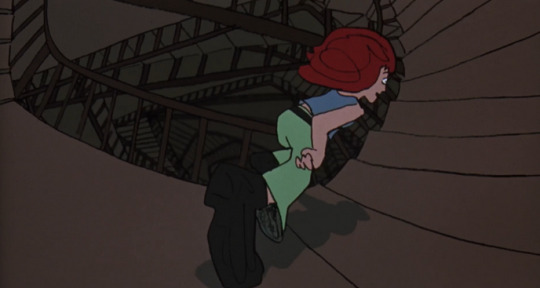
Analysis: The most obvious scene from “Run Lola Run” (1998) that can be associated with Baudrillard’s definition of simulation is the repeated animation scene of Lola running down the stairs from her apartment (Tykwer, 1998, 12:15). This scene has multiple factors which make it hyperrealistic in one way or another. Firstly, as the scene transitions from the last, the animated sequence is shown through the television in Lola’s living room where her mother sits. This crosses a hyperrealistic border of a simulation. This blending of animated and live-action footage contributes to the sense of hyperreality by presenting an alternate reality within the film’s narrative framework. Secondly, the animated sequence shows the stairs as infinite. As Lola runs down them, there are countless staircases spiraling in the background. Despite the fact that these stairs never seem to end, Lola reaches the bottom after encountering a man and his dog. This shows a clear instance of hyperrealism, presenting a distorted version of reality. Finally, the use of animation in this scene serves as a final detachment from reality, allowing the viewer to create a new image of reality based on the film’s establishment of continuity. Overall, the repeated animation sequence of Lola running down the stairs in “Run Lola Run'' (1998) exemplifies Baudrillard’s concept of simulation by presenting a hyperrealistic depiction of space and movement that blurs the boundary between reality and representation.
Parody
Definition: Parody refers to the imitating or mimicking a particular style, work, genre, or scenario with deliberate exaggeration or distortion for comedic or critical effect. James particularly highlights that “the general effect of parody is… to cast ridicule on the private nature of these stylistic mannerisms and their excessiveness…” (5), emphasizing the intended mockery or satire of the subject of the parody.
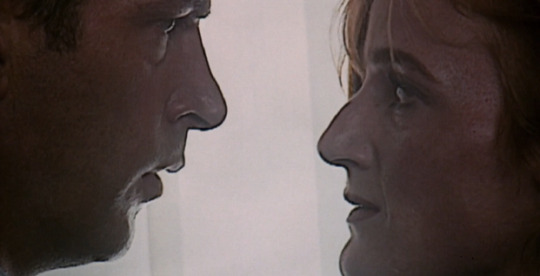
Analysis: A scene in "Run Lola Run" (1998) that aligns with Jameson's lens of parody is the confrontation between Lola's father and his mistress during Lola's second run (Tykwer, 1998, 38:55). This scene introduces a layer of parody through its exaggerated portrayal of familial drama and the distortion of traditional narrative expectations. During Lola’s first attempt to obtain 100,000 marks, she learns that she is not her father’s child when she meets with him and asks him for the money. In this scene where Lola’s father and his mistress are discussing that she is pregnant, she mentions that the baby could belong to someone other than him, leading them to have a loud fight in Lola’s father’s office. The introduction of this layer of dramatic irony further enhances the parody within the scene. Viewers are aware of Lola's father's previous involvement in potentially raising a child who is not his own, adding a satirical twist to the unfolding events. Much of the serious tone of this film’s scenes, including this one, emphasize the excessive nature of certain reactions. Lola then walks in on this interaction, adding to the absurdity of the situation as well as the dramatic irony. When considered alongside the repetition of this scene throughout the film, it becomes apparent that this moment serves as a parody of familial dysfunction and the complexities of human relationships. Through its exaggerated portrayal and distortion of traditional narrative tropes, this scene highlights Jameson's notion of parody as a tool for casting ridicule on exaggerated stylistic mannerisms and excesses within the film's narrative.
(1) Gilles Deleuze. Difference and Repetition (New York, New York: Columbia University Press, 1994), 15. (2) Deleuze, Difference and Repetition, 1. (3) Jean Baudrillard, “Simulacra and Simulations” in Modernism/Postmodernism (New York: Pearson Education Unlimited, 1992), 152-153. (4) Baudrillard, “Simulacra and Simulations”, 154. (5) Fredric Jameson, “Postmodernism and Consumer Society” in Modernism/Postmodernism (New York: Pearson Education Unlimited, 1992), 166.
0 notes
Text
In exploring visual analysis through the lenses of Jean Baudrillard’s “Simulacra and Simulations” and Fredric Jameson’s “Postmodernism and Consumer Society,” one can discern the evolution of images and their significance in contemporary culture. Baudrillard delineates the breakdown of an image into four successive phases. The first of those phases is what Baudrillard describes as a “reflection of a basic reality,” where the image is a good appearance of reality (1). The second is where the image “masks and perverts a basic reality,” crafting an evil appearance (2). The third instance is the masking of “the absence of a basic reality,” where the image’s lack of correlation to reality becomes clear (3), and the fourth and final stage is the stage in which the image becomes “its own pure simulacrum,” (4). In this final stage, Baudrillard reframes this disconnection from reality as the moment “when the real is no longer what it used to be…” (5).
According to Jameson, both parody and pastiche “involve… the mimicry of other styles and particularly of the mannerisms and stylistic twitches of other styles,” (6). Parody in particular has a particular relationship with the object it mocks. Jameson describes this relationship, writing that “the general effect of parody is… to cast ridicule on the private nature of these stylistic mannerisms and their excessiveness…” (7). To Jameson, this ridicule features a comedic and sometimes satirical tone. In contrast, pastiche is described as “a neutral practice of [parody]…. Pastiche is blank parody, parody that has lost its sense of humor,” (8). Pastiche is merely a simulation of the original object it mimics, devoid of its own meaning.
The breakdown of images and the transition from parody to pastiche highlight the complexities of poststructuralism and postmodernism in visual analysis, illustrating the evolving relationship between representation, reality, and meaning in contemporary society.
(1) Jean Baudrillard, “Simulacra and Simulations” in Modernism/Postmodernism (New York: Pearson Education Unlimited, 1992), 152-153.
(2) Baudrillard, “Simulacra and Simulations”, 152-153.
(3) Baudrillard, “Simulacra and Simulations”, 152-153.
(4) Baudrillard, “Simulacra and Simulations”, 152.
(5) Baudrillard, “Simulacra and Simulations”, 153.
(6) Fredric Jameson, “Postmodernism and Consumer Society” in Modernism/Postmodernism (New York: Pearson Education Unlimited, 1992), 166.
(7) Jameson, “Postmodernism and Consumer Society”, 166.
(8) Jameson, “Postmodernism and Consumer Society”, 167.
(9) Jameson, “Postmodernism and Consumer Society”, 166.
Reading Notes 5: Baudrillard to Jameson
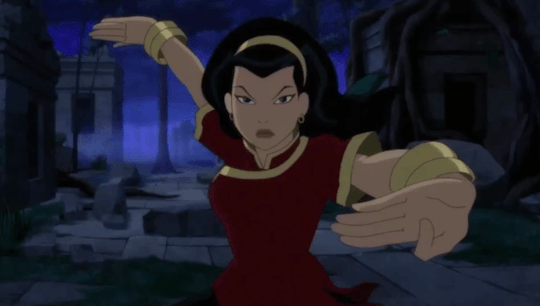
To further our studies in visual analysis, Jean Baudrillard’s “Simulacra and Simulations” and Fredric Jameson’s “Postmodernism and Consumer Society” offer guidance to understanding the roles of poststructuralism and postmodernism.
What are the four successive phases that break down an image?
What is the relationship of parody to the object it mocks, and at what point does parody become impossible and pastiche appear?
@theuncannyprofessoro
17 notes
·
View notes
Text
Analytical Application 2: Structuralism and Semiotics
Connotation :: The Rocky Horror Picture Show (1975)

Definition:
Connotation refers to the additional meaning or associations that a word or image carries beyond its literal definition. Ferdinand de Saussure, in "Course in General Linguistics," emphasizes the importance of the connotative aspect of signs. He states that the “bond between the signifier and the signified is arbitrary,” (1), also mentioning that the sign is based on “tradition” (2). This means that the associations or connotations we have with linguistic signs and symbols are based on personal experience and arbitrary societal tradition/association.
Analysis:
The poster, featuring exaggerated and sensuous lips adorned with bold red lipstick, embodies a myriad of connotations that resonate with the film's themes of rebellion, sexuality, and unconventional identity. In this context, the lips serve as a potent signifier, conveying layers of meaning through their visual representation.
The bold red lipstick, a hallmark of femininity is often used as a symbol alluding to sexuality. This symbol traditionally carries connotations of passion, desire, and empowerment. Depending on the viewer’s personal experience, this could symbolize confidence and defiance of societal norms, reflecting the film's exploration of sexual liberation and the rejection of conventional gender roles. The exaggerated size and central placement of the lips amplifies their allure and intensity, heightening the sense of desire and indulgence associated with the film's narrative.
Furthermore, the absence of any other visual elements besides the lips and the text accentuates their significance within the composition, emphasizing their role as the primary signifier of the film. This minimalist approach allows the viewer to focus solely on the evocative power of the lips and the provocative message they convey based on the symbol’s connotations.
The tagline "a different set of jaws" serves as a linguistic sign with its own pop culture and personal connotations, possibly referencing the popular film "Jaws" while also playing upon the lips (and teeth) pictured in the poster. This juxtaposition of the familiar with the unexpected captures the essence of the film's unique appeal and cult status, inviting viewers to embrace a cinematic experience that defies traditional conventions. In all, this movie poster utilizes the connotations of both symbols and signs to appeal to a certain audience and encode a message to the viewer.
(I don’t have the space to talk about the font for the title but that has its own connotations with ‘horror’ as well!)
Diegesis :: Nuns on the Run (1990)

Definition:
Diegesis refers to the narrative world depicted in a film, including the characters, events, and settings. Christian Metz describes the diegesis as “the fictional space and time dimensions implied in and by the narrative, and consequently the characters, the land-scapes, the events, and other narrative elements…” (3). Something that is diegetic is included within the film’s universe in order to add context or further worldbuilding in one way or another.
Analysis:
The film poster for "Nuns on the Run" (1990) presents an interesting interplay of diegetic and non-diegetic elements, particularly with the inclusion of a wanted poster within the poster itself. Diegesis, as defined by Christian Metz, refers to the narrative world depicted in a film, including the characters, events, and settings.
In this poster, the diegesis is primarily represented by the characters portrayed by Eric Idle and Robbie Coltrane, who are dressed as nuns hiding behind a wall as Brian Hope, Eric Idle’s character, looks into the camera. This imagery establishes the narrative premise of the film, which revolves around two small-time criminals who disguise themselves as nuns to escape from the law.
However, the inclusion of a wanted poster featuring the characters' mugshots and names (as well as the crime they committed in the film’s narrative) adds an intriguing layer to the diegesis. While the characters themselves are part of the film's narrative world, the wanted poster is a diegetic element being used for a non-diegetic purpose. It serves as a meta-narrative device, bridging the gap between the film's fictional world and the story of the movie, advertising the film’s concept. The inclusion of the wanted poster within the film along with the 4th wall break also highlights the playful and comedic nature of the film, following comedy movie poster tropes.
Overall, the film poster for "Nuns on the Run" (1990) effectively utilizes a diegetic element in a non-diegetic way to establish the narrative premise and genre of the film. The inclusion of the wanted poster within the poster adds depth and complexity to the diegesis, inviting viewers to consider the film's narrative world from a meta-narrative perspective.
Filmic Narrative :: Flatliners (1990)
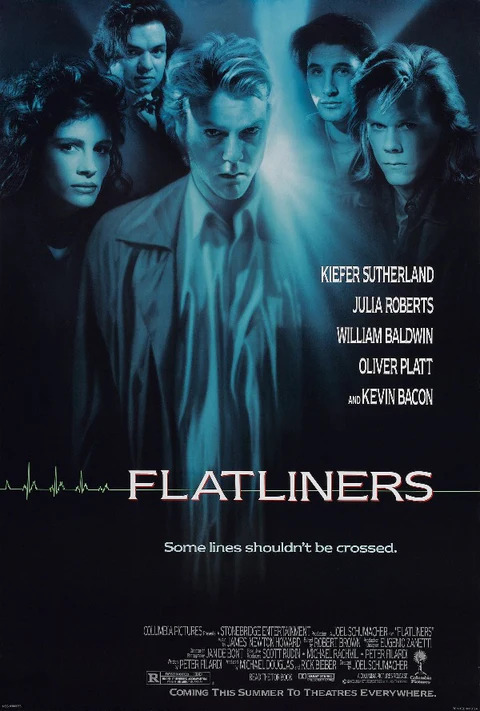
Definition:
Filmic narrative refers to the storytelling techniques employed in cinema, including the arrangement of events, characterization, and thematic development. Metz explains the filmic narrative as the storytelling techniques and structures employed in cinema to convey a coherent sequence of events, characters, and themes to the audience (4). It is made up of the techniques that are used and collocated to present the narrative to the viewer.
Analysis:
The film poster for "Flatliners" (1990) offers a glimpse into the film's narrative through its composition and imagery. The poster features a striking visual of five silhouetted figures walking across a narrow beam of light against a backdrop of darkness. This imagery immediately evokes a sense of mystery and intrigue, hinting at the film's exploration of the unknown.
The arrangement of the silhouetted figures suggests a group of characters embarking on a collective journey or quest, a common trope in narrative storytelling. The use of silhouette enhances the sense of anonymity and universality, allowing viewers to project themselves onto the characters and engage with the narrative on a personal level. The beam of light that illuminates the characters serves as a visual metaphor for enlightenment or revelation, symbolizing the transformative journey they are about to undertake.
Aside from the outfits of the ghostly, translucent characters, the heart monitor behind the title of the film implies the setting and premise of the film, with the sound of heart monitors having a strong association with medical environments. As well as medical environments, the heart monitor (particularly when it flatlines) represents death, or at the very least the stopping of the heart.
The tagline "Some lines shouldn't be crossed" adds an additional layer of narrative intrigue, suggesting that the characters' actions may have unforeseen consequences that blur the boundaries between life and death. All of these elements work together, or collocate, to present a peek into this narrative to the viewer. This is a perfect example of how filmic narrative can be utilized outside of actual filmmaking as a form of storytelling. Although the poster only alludes to the film’s themes and story, by analyzing the many elements in the poster, we can extract a form of the narrative that draws us in further.
Language (cinema) :: Poltergeist (1982)
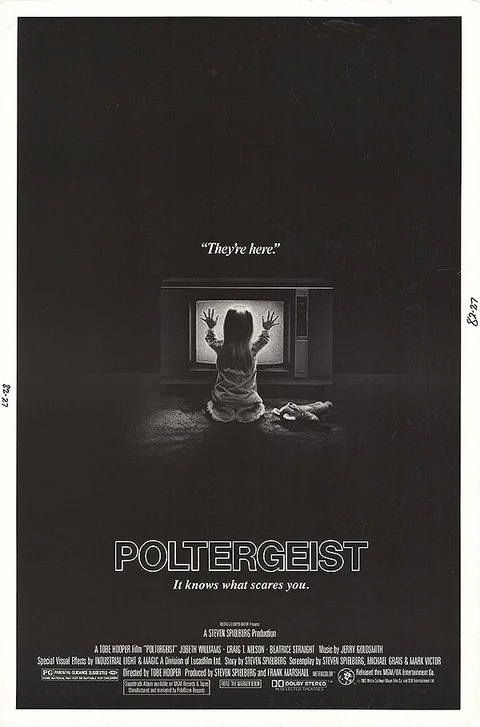
Definition:
Language in the context of cinema and film refers to the unique visual and auditory elements used to convey meaning and evoke emotions. Christian Metz explores how cinematic language utilizes various techniques such as editing, framing, and sound design to communicate with the audience (5), forming its own kind of film language!
Analysis:
The film poster for "Poltergeist" (1982) exemplifies the concept of language in cinema or filmic language as defined by Christian Metz, emphasizing the unique visual and auditory elements used to convey meaning and evoke emotions within the cinematic medium. The poster employs a combination of visual elements and symbolism to communicate the eerie and supernatural themes of the film, effectively engaging viewers and setting the tone for the cinematic experience.
The poster features a young girl sitting in front of a static-filled television screen, her hands reaching out towards, if not touching, the screen as if drawn into its depths. This imagery serves as a powerful visual representation of the film's central premise, which revolves around a family haunted by malevolent spirits through their television set. The static-filled screen symbolizes the intrusion of the supernatural into the domestic space, blurring the boundaries between reality and the unknown.
It is also worth noting that static has a very notable and distinctive sound. When one thinks of television static, they likely think of the sound that goes along with it. This use of a symbol with connotations of sound is a clear use of filmic language to convey the uncanny themes of the film’s narrative.
The poster for "Poltergeist" utilizes visual elements such as lighting, composition, and symbolism to convey meaning and evoke emotions in the viewer, all elements of the language of cinema. The static-filled television screen serves as a visual signifier of the supernatural phenomena depicted in the film, while the girl's body language communicates fear and fascination due to the uncanny nature of her pose. Through its use of visual language, the poster effectively sets the stage for the cinematic experience, inviting viewers to watch the film and properly engage with the language of film that it utilizes.
Sign :: Jackie Brown (1997)

Definition:
A sign in cinema refers to any element within the film that carries meaning, including images, sounds, and notably, language. Ferdinand de Saussure defines a sign as a combination of a signifier and a signified. He argues that signs are arbitrary and derive their meaning from cultural conventions and tradition (6).
Analysis:
The film poster for "Jackie Brown" (1997) offers a plethora of signs to analyze. The central signifier in the poster is the image of Pam Grier as the titular character, Jackie Brown, positioned prominently at the forefront. Grier's confident stance and assertive gaze serve as visual cues that signify Jackie's strength and resilience as a character. She embodies the archetype of the empowered female protagonist, a key signifier of the film's narrative focus on themes of agency and empowerment.
Accompanying Jackie Brown are signs that provide additional layers of meaning and context. The presence of other characters, such as Robert De Niro's Louis Gara and Samuel L. Jackson's Ordell Robbie, serves as signifiers of the complex web of relationships and conflicts that drive the film's plot. Their positioning and expressions convey subtle hints about their roles and motivations within the narrative.
Moving away from the film’s narrative and toward the signs imbued within the poster’s text, actors’ names are highlighted in a bright red against the gray background, with the director Quentin Tarantino’s name outlined by a golden bubble. With his name and the colors and font as the signifier(s), the signified meaning of this highlight is Quentin Tarantino’s prestige; effectively branding the film as prestigious, given his history of critical hits.
Overall, the film poster for "Jackie Brown" effectively utilizes signs to convey key aspects of the film's narrative, characters, and even to highlight the creators. Through the strategic arrangement of visual elements, including characters, color, and typography, the poster engages viewers and encodes messages about the film and its background and creative process.
1) Ferdinand de Saussure. Course in General Linguistics. New York: McGraw-Hill Book Company, 1966, 67. 2) Ibid, 74. 3) Metz, Christian. "Some Points in the Semiotics of Cinema" in Film Theory and Criticism, 68. Edited by Leo Braudy and Marshall Cohen. New York, Oxford: Oxford University Press, 2009. 4) Ibid, 68-70. 5) Ibid, 67. 6) Ferdinand de Saussure. Course in General Linguistics. New York: McGraw-Hill Book Company, 1966, 67-75.
3 notes
·
View notes
Text
Christian Metz's "Some Points in the Semiotics of the Cinema" and Giles Deleuze's "Introduction: Repetition and Difference" explore the significance of connotations in signifying various elements in film and the distinctions between repetition, generality, and resemblance.
Connotations in film serve as crucial elements in signifying style, genre, symbol, and poetic atmosphere by extending beyond the literal meaning of signs to evoke specific associations and emotional responses in viewers. Through techniques such as mise-en-scène, cinematography, and sound design, filmmakers imbue their works with layers of connotations that enrich the audience's interpretation (1).
Giles Deleuze explains the nuanced differences between repetition, generality, and resemblance. Repetition, unlike generality, involves the reiteration of specific elements or patterns with variations. It signifies a recurrence that is not identical but carries with it a difference or alteration, contributing to the creation of new meanings and experiences (2). On the other hand, resemblance implies a likeness or similarity between objects or concepts, whereas repetition emphasizes the iteration of difference within a continuum of sameness (3).
1) Metz, Christian. "Some Points in the Semiotics of Cinema" in Film Theory and Criticism, 65-67. Edited by Leo Braudy and Marshall Cohen. New York, Oxford: Oxford University Press, 2009. 2) Deleuze, Gilles. Difference and Repetition, 1-6. New York, New York: Columbia University Press, 1994. 3) Ibid, 20-25.
Reading Notes 4: Metz to Deleuze

Christian Metz’s “Some Points in the Semiotics of the Cinema” and Giles Deleuze’s “Introduction: Repetition and Difference” transitions our inquiry from semiotics and structuralism to poststructuralism and postmodernism.
How are connotations used to signify style, genre, symbol, or poetic atmosphere in film?
How is repetition different from generality, and how is repetition different from resemblance?
@theuncannyprofessoro
13 notes
·
View notes